Looking to publish? Meet your dream editor, designer and marketer on Reedsy.
Find the perfect editor for your next book
1 million authors trust the professionals on Reedsy. Come meet them.
Blog • Perfecting your Craft
Last updated on Jul 12, 2023

How to Become a Travel Writer in 5 Steps: A Guide for Travel Bugs
For most people, trekking through the mountains or sampling French cuisine is a rare treat. For travel writers, it might just be another day on the job. As their job title suggests, travel writers create content about anything and everything related to exploring the world.
Whether they’re writing to help readers plan a trip or to transport them — through words — to places they may never visit, no two travel writers share the same journey through their careers. But if you intend to walk down this road and become a travel writer, here are five steps to help you on your professional adventure.
Learn to be a descriptive writer and a thorough researcher
If there’s a single skill-set that almost all great travel writers share, it would be in research and descriptive writing. While people in this profession often have degrees in English or journalism, this is not a strict requirement. People come to travel writing from all walks of life, and publications tend to be concerned with your ability to deliver a great piece over any advanced degree.
Although there isn’t any specific travel writing degree, if you want to learn all you can in one centralized place, there are many travel writing courses that train everyone from experienced journalists to new writers.
Immerse readers with your descriptive writing

Readers want you to take them on a journey with you. If you can’t pay for them to join you on a sea voyage to the Azores, you’ll have to settle for evoking the five senses and other descriptive writing techniques.
Take for example, Paul Theroux. A prolific travel writer with a career spanning five decades, he’s treasured for his ability to pull readers into his adventures with simple yet evocative language, as he does in his essay, “ Taking the Great American Roadtrip ”:
What made Barstow's billboards a peculiar blight was the contrast with everything that lay around them—the landscape that was so stark and dramatic as a brooding expanse of withered shrubs and fat cactuses, the stony roads that seemed to lead nowhere, the bleak and beautiful backdrop that seemed as though no one had laid a hand on it, with lively colorations at a distance and up close so dry, like a valley of bones looking as though they could not support life. I had seen deserts in Patagonia and Turkmenistan, northern Kenya and Xinjiang in western China; but I had never seen anything like this. The revelation of the Mojave Desert was (peering past the billboards) not just its illusion of emptiness but its assertive power of exclusion, the low bald hills and far-off mountains looking toasted and forbidding under the darkening sky.
Theroux invites the reader on the road with him and describes the desert landscape in crisp detail. The use of simile (“like a valley of bones”) and strong language (“stark, dramatic”) brings the piece to life and gives us a view from Theroux’s window so it feels like we’re traveling along with him.
How do you remember and keep track of all these details while you’re on the go? Keeping a journal while you’re traveling — even if it’s just to another part of the town you live in — is a great method to have all the information you need to write your story when you finally get to sit down and reflect on your journey.
Cherry-pick the details that will tell the best story
Though you may have recorded many interesting details, you can’t include everything. Travel writing may feature a lot of exposition to set the scene, but it isn’t the same thing as keeping a journal. To make a stronger piece, you need to focus on the right stories and details, which means knowing what to add and what you can leave out.
At the same time, being concise is important. Unless you’re running your own blog or website, most digital or physical publications will have word limits to adhere to. Identifying what’s most important and most interesting to your audience as you write makes for more compelling writing.
Preparation is key
For travel writers, research skills go hand-in-hand with writing skills. You might be asked to write about a topic you aren’t familiar with or you might need to learn more about a place’s history or background to give your piece greater context. Research will allow you to create an accurate and well-informed story and help fill in the gaps in your own knowledge. And who knows, you might stumble on something that will inspire your next trip or story.
Before you begin planning your next trip to the most popular destination of the year, you need to research where everyone has already gone. If you find a lot of articles about solo travel in Brazil, that might mean you need to find a new angle or pick a different place entirely, and down another research rabbit hole you’ll go.

Learning as much as you can about the culture and history of the place you’re visiting will undoubtedly deepen your understanding and experience of it. A monument or a park might be pretty and fun to hang out in, but knowing that New York City’s Washington Square Park was built over the graves of 20,000 people makes for both an interesting angle and a more emotionally impactful piece.
Even if you want to write from the perspective of someone going into an experience blind, you still need to do research to travel anywhere — or you’ll end up writing a travelog where you barely find your way out of the airport parking lot.
While these are the main two skills you should focus on, there are a few more that can give you and your writing a boost.
Interviewing
A subset of research, learning how to interview effectively will broaden the scope of your knowledge and your writing. Sometimes, you need a perspective other than your own, and who better to tell you about all the hidden secrets of Barcelona than a local? It’s an invaluable skill — especially for a travel writer — to be able to go into a place and speak to people, to get their stories and perspectives so you can go beyond just being a tourist. It’s a way to pull back the curtain and really connect yourself and your reader with the wider world.

Travel writers do this quite often, and a great example can be seen in Anthony Bourdain’s TV show, Parts Unknown . On the surface, this food travel show showcases the cuisines of the world. But Bourdain’s interests, and thus the show’s, were much more focused on the lives of the people he’d meet along the way.
If you also want to write in a way that exceeds the usual ‘visit-here-and-eat-that’ humdrum of most so-called travel writing and really start to understand the people you’ll encounter, you’ll need to become a passable interviewer.
Finding people to interview, asking the right questions, and making your interviewee comfortable are the main things that go into conducting a successful interview. Before you go out into the wider world, you can practice with friends, but really, the best way to learn is by doing. Record your interviews or take notes to ensure you don’t forget anything and have quotes to use for when you write your story. And, of course, ask permission before you conduct the interview or use the material.
With your notes and quotes in order, you then need to do the hard part: figure out what’s relevant. You may have dozens of poignant quotes and conversations, but it’s inevitable that you’ll have more raw material than you’ll be able to use. There’s no one right way to make this judgment. It takes time, experimentation, and experience to figure which ones are the best and order them together into one coherent whole.
Stay up to date with the travel industry
While not necessarily a skill, part of being a good travel writer is being in the know about what’s happening in the travel industry. After all, the larger trends of people’s travel habits, popular destinations, and the state of major airlines and hotels influences the kind of information people are looking for. And it can always serve as inspiration for your next story. There are dozens of industry newsletters you can subscribe to that will keep you apprised of any new developments (including job openings and calls for pitches) in the world of travel, such as Lottie Gross’s Talking Travel Writing . Use them wisely.
Staying up to date is also knowing where the opportunities to monetize your writing lie. The travel industry is full of affiliate programs and content partnerships, where you can get paid for your work without having to sell it to a publisher or outlet. Your chances of landing these types of deals significantly increase if you have your own blog or social media accounts with a good amount of subscribers, but there may be other opportunities out there as well if you’re savvy.
Even travel writers who don’t consider themselves “influencers” can learn a lot from people creating video content relating to travel topics, especially when it comes to how to make a profit off their content. If you’re interested in running and making money off your own blog, knowing about programs like these and where to find them is incredibly important.
Whether you’re looking to get a brand partnership, pitch an online publication, or a guest post on a travel blog, learning the basics of search engine optimization (SEO) and applying it to your writing will help you as you search for opportunities. Essentially, SEO is about optimizing a web page — in this case, your article — to be read by a search engine and draw users to it. It’s no surprise, then, that many publications value writers who have SEO skills and can optimize their articles to bring more traffic to their website.
Learn to take good photos
Besides being a competent and compelling writer, there's another skill that you should look to hone: photography. As much as people enjoy reading about places they’ve never been to, descriptive writing and imagination can only go so far. When it comes to travel, a picture can truly speak more than a thousand words. And a video might be even better. Visual media adds extra color and context to your piece while complementing your writing.

Depending on whether you’re freelancing or working full-time for a publication, you won’t always have a photographer following you on your journey. Learning the basics of photography can be helpful in those instances and make you a more well-rounded travel writer. In some cases, it might even be attractive to publications if you can provide your own photos. Consider posting what you capture on your personal blog, Instagram, or TikTok as well. Any way of building a following is great.
This doesn’t mean you must invest in a quality DSLR camera (though you certainly can). These days, many smartphones have top-of-the-line cameras that can take the kinds of stunning pictures of white sand beaches and ancient castles that readers are looking for. A beginner’s photography course can help you learn all the basics about lighting, color, and composition and have you snapping great shots in no time.
📸 Taking plenty of photos can also help you ace your descriptive writing, for those moments when you’re struggling to recall specific details about a place you visited.
Build a portfolio of work
Once you have a solid foundation of skills, you can begin creating your portfolio. While you might dream of being a staff writer at a travel publication, or make a living as a freelance travel writer, it’s unlikely that you’ll be able to jump straight into that role.
Find a niche you love
Unsurprisingly, travel writing is a popular choice for aspiring writers. Who doesn’t want to galavant around the world and make a living writing about your adventures? But, of course, that also means it’s a very competitive field, and standing out can be difficult. Finding a way to differentiate yourself will give you a leg up and provide a focus for your articles.
The great thing about travel writing is that there is a nearly never-ending number of niches you could devote yourself to. You can write exclusively about a certain country or area of the world or gear your work towards a specific audience, such as budget travelers, people traveling with family, or digital nomads. If you have a unique perspective, it’s likely that people will want to read about it.
That isn’t to say you can’t write outside your chosen subfield. Plenty of writers find success publishing in their niche and then expanding their reach to become a sort of jack of all trades. Having a focus will simply allow you to stand out from the crowd.
Collect some quality clips

First, you need to build up a reputation and a solid amount of quality clips — a journalistic term for published articles. They will serve as your resume, showing off your writing and research skills, as well as the topics you’re familiar with and your general style. As you start looking for ways to build your portfolio, internships, freelance opportunities, and blogging can all be great ways to start out.
💡If you’re curious about the many kinds of work travel writers can do, check out this post about the different types of travel writing .
📕And if you already have a travel writing blog, you might want to turn your blog into a book that you can pitch to publishers or self-publish.
Look for internships
Internships are a common way writers gain experience and clips. Magazines and online publications may allow aspiring travel writers to flex their skills and learn about what goes into professional travel writing. However, while there are paid internships in this field, many are likely unpaid. Whether you want to pursue an unpaid internship remains up to you, but we recommend valuing your time and pursuing paid internships when you can.
Consider freelance writing
Another option to consider is freelance writing . Pitching articles to travel publications will not only be a way to gain jobs and clippings but allows you to practice ideation and build up a personal brand, as you are entirely in charge of the topics you’re writing about. It also expands your network of contacts in the industry, which will help you as you continue to pitch magazines and might lead to a job somewhere down the road.

FREE RESOURCE
Writing Submissions Checklist
Make sure your magazine and contest submissions are prepped to impress.
And if you want to take complete control of your career, a subset of freelancing is blogging. Dozens of freelance travel writers supplement (or make a career out of) running their own personal blog. Having one will give you a ready-made portfolio of clips showing off your skills. This is where having a niche can be especially helpful, as it’s a way to set you apart from all the other travel blogs on the Internet.
Search for jobs and writing opportunities
With a solid portfolio of clips, it’s time to go out into the world and fully devote yourself to a career in travel writing. There are two main tracks you could take: finding a staff writer position at a magazine or becoming a freelance travel writer.
Finding full-time travel writer jobs

For many writers, the dream is to work full-time as a travel writer for a publication. It offers stability while letting you travel to different destinations to write and explore.
Although there are many travel-focused magazines like Conde Nast Traveler and Travel + Leisure that might have staff writer positions, don’t discount other publications. Some magazines and newspapers with completely different focuses have travel sections that need staff writers to keep them running.
For positions like this, a portfolio is especially important. Magazines want to see that writers have a background in journalism and are reliable writers who can deliver good-quality pieces on time. Previously being published is often proof of that. But part of building a portfolio is also building connections with people in the industry. Knowing someone at a magazine who is familiar with your work and can vouch for you can help you get your foot in the door and be hired as a staff writer.
Freelancing
Another option is to continue down the freelance path, pitching and writing your own stories. This route gives you a lot more freedom. You can decide which places to visit and which activities you want to do, and you’re always in charge of your own itinerary. Overall, you’re much less likely to work on a story you’re not interested in because an editor told you you must.
This is where picking a niche and having a blog can be especially helpful. Establishing yourself as an authority on a subject will draw people to your articles and give you credibility as you pitch publications. A website dedicated to your niche, with all your expertise located in one place, elevates your credibility and provides a useful resource for your readers — especially if you get a handle on SEO. Eventually, you can even turn your blog into a book and create another revenue stream.

The Full-Time Freelancer's Checklist
Get our guide to financial and logistical planning. Then, claim your independence.
Travel writing allows you to indulge in and subsidize your wanderlust and make a living off of it. More than that though, travel writing is a way to connect people across cultures and great distances, and build an appreciation for the uniqueness and diversity around us.
Continue reading
Recommended posts from the Reedsy Blog

How Many Sentences Are in a Paragraph?
From fiction to nonfiction works, the length of a paragraph varies depending on its purpose. Here's everything you need to know.

Narrative Structure: Definition, Examples, and Writing Tips
What's the difference between story structure and narrative structure? And how do you choose the right narrative structure for you novel?

What is the Proust Questionnaire? 22 Questions to Write Better Characters
Inspired by Marcel Proust, check out the questionnaire that will help your characters remember things past.

What is Pathos? Definition and Examples in Literature
Pathos is a literary device that uses language to evoke an emotional response, typically to connect readers with the characters in a story.

How to Start a Children’s Book: Coming Up with Your Big Idea
If you've ever dreamed of writing a children's book but aren't sure where to start, check out this post to learn more about how you can create the perfect story for kids.

How to Write a Biography: A 7-Step Guide [+Template]
Portraying someone’s life on paper in a comprehensive and engaging way requires solid preparation. Here are 7 steps you can follow.
Join a community of over 1 million authors
Reedsy is more than just a blog. Become a member today to discover how we can help you publish a beautiful book.

We made a writing app for you
Yes, you! Write. Format. Export for ebook and print. 100% free, always.

1 million authors trust the professionals on Reedsy. Come meet them.
Enter your email or get started with a social account:

- How to Become a Travel Writer: Complete guide for travelogue writing
- Self Publishing Guide
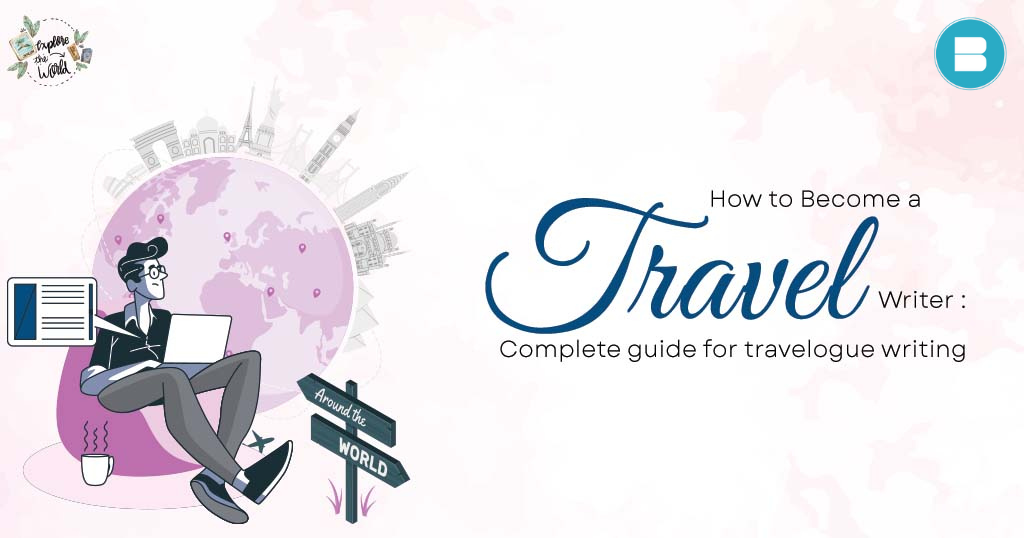
The world is a treasure trove of experiences waiting to be explored and shared, and becoming a travel writer is your passport to capturing and narrating these adventures. If you’ve ever felt the wanderlust in your veins and a passion for storytelling in your heart, then embarking on the path of a travel writer might just be your calling. In this comprehensive guide, we’ll walk you through the intricate art of travelogue writing, offering insights, tips, and a roadmap to help you embark on this exciting journey of words.
Understanding the Role of a Travel Writer
Travel writers embark on journeys that transcend physical landscapes; they immerse themselves in cultures, traditions, and stories that shape the world. Their role is to bring these experiences to life through words, painting vivid pictures for readers who long to discover new horizons. Beyond merely documenting destinations, travel writers craft narratives that transport readers, evoking emotions and sparking a sense of wanderlust. They uncover the hidden stories that breathe life into places, connecting readers to the heart and soul of a locale. Travel writers are not just chroniclers of journeys; they are ambassadors of exploration, inviting others to embark on their own adventures armed with insights and inspiration.
Developing Your Writing Style
In the realm of travel writing, a writer’s style becomes their distinct fingerprint, an expression of their literary personality. This style is the lens through which readers perceive the world you describe. It’s crucial to cultivate a voice that resonates authentically with your experiences and perceptions. Experimentation is key; try on different stylistic garments, from lush, poetic prose to succinct, informative language. Reading a diverse range of travel literature can broaden your horizons and help you pinpoint your comfort zone. Whether you’re crafting a blog post, an article, a book, or a social media update, your style should reflect your genuine self. The more you explore and experiment, the more refined and unique your writing style will become, captivating readers and making your travel tales truly unforgettable.
Mastering the Art of Observation
Observation is the writer’s lens to the world, a tool that transforms mundane moments into poetic prose. A skilled travel writer hones the art of observation by immersing themselves in their surroundings. Engaging all the senses amplifies the experience—the aroma of street food, the symphony of bustling markets, the tactile texture of ancient walls. These sensory snapshots become the palette from which you paint your narrative. Each detail is a brushstroke that adds depth and authenticity to your travelogue. By mastering observation, you invite readers to step into your shoes, to feel the cobblestones underfoot, to taste the exotic spices, and to hear the laughter of the streets. It’s in these intricate details that the magic of travel writing comes alive.
Choosing Your Niche
In the vast realm of travel writing, finding your niche is like discovering your compass in a labyrinth of possibilities. Your niche isn’t just a subject; it’s your lens for exploring the world. It’s a culinary journey that takes you from street food stalls to Michelin-starred restaurants, or an adventure seeker’s quest for adrenaline in the great outdoors. Your niche sets you apart and lends your writing a distinct perspective. It allows you to delve deep, becoming an expert in your chosen field. Whether it’s sustainable travel, solo backpacking, cultural immersion, or any other passion, your niche shapes your identity as a travel writer and connects you with an audience that shares your interests.
Research: The Backbone of Travel Writing
Behind the enchanting stories of travel writing lies the backbone of thorough research. This groundwork is essential to creating narratives that are not only immersive but also accurate and informative. As you plan your journey, delve into the history and cultural nuances of your destination. Understand the significance of local landmarks, festivals, and traditions. Connect with locals to gather insights that may elude tourists’ eyes. A well-researched travel piece goes beyond surface-level description; it weaves historical context and cultural richness into the narrative tapestry. Research transforms your writing from subjective musings to well-rounded, engaging tales that educate and inspire readers. Just as an architect relies on blueprints, a travel writer relies on research to construct narratives that stand strong, with credibility and authenticity as their pillars.
Crafting Compelling Stories
The heart of impactful travel writing lies in your ability to weave words into stories that resonate deeply. Begin with an irresistible hook, a gateway that beckons readers to step into your narrative world. Structure your piece with a well-defined beginning, middle, and end—a journey within your journey. Intertwine personal anecdotes that reveal your vulnerability and growth, forming a relatable bond with your readers. The magic happens when you seamlessly blend these personal moments with interactions with locals, painting vibrant pictures of cultures and communities. Vivid descriptions, enriched by your observant eye, create an immersive experience. By orchestrating these elements, you forge an emotional connection between readers and the destination, transporting them to distant lands and igniting their wanderlust.
Honing Your Photography Skills
In the digital age, visuals serve as windows into the worlds you describe. Basic photography skills can be a powerful asset for a travel writer. A well-captured image encapsulates a place’s essence, and a picture truly can speak a thousand words. Learning to frame captivating shots enhances your storytelling. High-quality photos complement your prose, offering readers a visual portal to your adventures. Skillful photography brings authenticity and relatability to your narratives, reinforcing the authenticity of your experiences. Whether it’s a sweeping landscape, a bustling market, or a candid portrait, your photos harmonise with your words to craft a multidimensional story that lingers in readers’ minds.
Building an Online Presence
In the digital landscape, an online presence is the bridge between your words and a global audience. Launching a travel blog or website serves as a portfolio where your stories reside. Here, you showcase your adventures, insights, and expertise. Leverage social media platforms as portals into your journeys—a place to share real-time snippets, behind-the-scenes moments, and reflections. Engage with your readers through conversations, fostering a community that rallies around your explorations. By cultivating this virtual tribe, you forge connections that amplify your impact. An online presence not only helps you reach a wider audience but also becomes a platform for sharing your passion and inspiring others to embark on their own journeys.
Pitching and Networking
Pitching your travel stories is akin to casting a net into the vast sea of publications, aiming to capture the attention of editors and readers. Thorough research is paramount; identify magazines, newspapers, and websites that resonate with your writing style and niche. Tailor your pitches to align with their editorial focus. Craft a succinct yet enticing pitch that highlights the uniqueness of your story and why it’s a perfect fit for their audience. Networking serves as a bridge to these opportunities. Engage with editors, connect with fellow writers, and attend industry events. Building relationships within the travel writing community not only opens doors but also fosters a supportive network where insights, advice, and collaborations flourish, propelling your journey as a travel writer.
Continual Growth and Learning
In the realm of travel writing, growth is a perpetual journey. The landscape shifts, and staying relevant requires embracing change and continual learning. Attend workshops, writing seminars, and conferences; these platforms immerse you in discussions about craft and industry trends. Surrounding yourself with fellow writers and mentors exposes you to diverse perspectives and techniques. Reading extensively within the genre broadens your horizons, showing you different ways to approach storytelling. This continual growth not only sharpens your skills but also infuses fresh perspectives into your work. As the world evolves and travel narratives transform, your commitment to learning ensures your writing remains dynamic and captivating, resonating with readers who seek new insights and adventures.
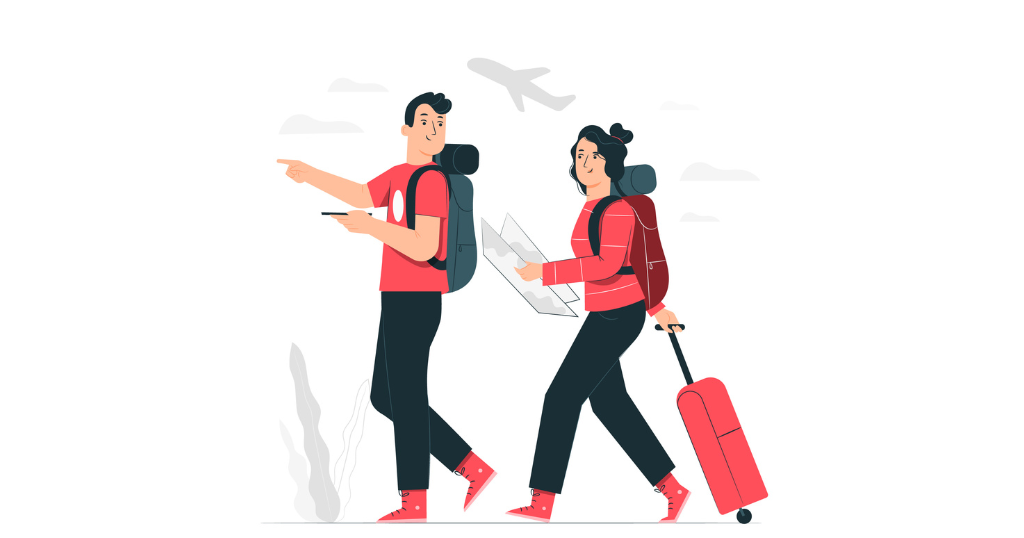
To embark on writing a travelogue, start by selecting a destination that has left a significant impact on you. Reflect on your experiences, emotions, and observations during the journey. Organise your thoughts and create an outline to structure your narrative. Begin with a captivating introduction that hooks readers and sets the tone for your story. Incorporate vivid descriptions, sensory details, and personal anecdotes to transport readers to the destination. Share cultural insights, interactions with locals, and unique experiences to make your travelogue engaging. Blend your personal perspective with informative content, and wrap up with a reflective conclusion. Remember, authenticity and passion are key to crafting a compelling travelogue that resonates with readers.
Becoming a full-time travel writer requires dedication, skill-building, and strategic steps. Start by honing your writing skills through practise and feedback. Create a professional online portfolio showcasing your travel writing. Pitch your work to travel magazines, blogs, and websites to gain exposure and build a portfolio. Establish a strong online presence through social media platforms and a personal blog. Network with fellow writers, editors, and industry professionals. As your reputation grows, consider reaching out to tourism boards, travel companies, and publishers for collaborations. Diversify your income by offering workshops, speaking engagements, or freelance writing. Consistency, perseverance, and a passion for exploration will pave the way to becoming a successful full-time travel writer.
To excel as a travel writer, you need a combination of skills and qualities. Strong writing skills, including descriptive language, storytelling, and attention to detail, are essential. Curiosity and a love for travel are paramount, as you’ll be exploring new destinations and cultures. Flexibility and adaptability are key to thriving in different environments. Research skills enable you to provide accurate information and historical context. Photography skills can enhance your content and make it more visually appealing. Networking abilities help you connect with editors, fellow writers, and potential collaborators. Finally, resilience and the ability to handle rejection are crucial in the competitive travel writing industry.
Travel writing, also known as a travelogue, is a genre of literature that captures the essence of travel experiences. It involves narrating personal journeys, adventures, and observations from various destinations. Travel writers aim to transport readers to new places, cultures, and landscapes through vivid descriptions, anecdotes, and insights. A well-crafted travelogue not only informs but also inspires readers to explore the world themselves. It can take various forms, including articles, essays, books, and online content, and often combines elements of storytelling, journalism, and creative writing.
Yes, travel writers can make money through various avenues. Freelance travel writers often get paid for articles, blog posts, and content commissioned by magazines, websites, and travel companies. Some travel writers secure book deals, earning royalties from published works. Collaborations with tourism boards, hotels, and brands can also be financially rewarding. Additionally, offering workshops, speaking engagements, and consulting services can generate income. However, income can vary widely based on experience, niche, and the demand for your work. Successful travel writers often have multiple income streams and diversify their offerings to sustain their careers.
You can write a travelogue for various platforms and outlets. Start by creating a blog or personal website where you can share your travel experiences. Submit articles and essays to travel magazines, both print and online. Many websites accept guest posts from travel writers. Consider pitching to travel-focused blogs and online publications. You can also contribute to the travel sections of newspapers and literary journals. Social media platforms, especially Instagram and YouTube, offer opportunities to share micro-travelogues through captions, stories, and videos. Additionally, consider self-publishing travel books or e-books through platforms like Amazon Kindle Direct Publishing.
- About The Author
- Latest Posts
Mansi Chauhan

You May Also Like

Leave a Reply Cancel reply
Your email address will not be published. Required fields are marked *
Save my name, email, and website in this browser for the next time I comment.
- EN - English
- PT - Portuguese
- ES - Spanish
- How it works
- Become a Host
- Download the app
Top Destinations
- United States
- United Kingdom
What type of experience are you looking for?
- Non-Profit School
- Permaculture project
- Eco Village
- Holistic Center
- Guest House
- How Worldpackers works

Learn from the most experienced travelers of the community
Traveling with worldpackers, planning and budgeting for travel, make a living while traveling as a lifestyle, travel with worldpackers.
- Using Worldpackers
- Work exchange
- Social impact
Plan your trip
- Women traveling
- Budget travel
- Solo travel
- Language learning
- Travel tips
- Get inspired
- Digital nomads
- Travel jobs
- Personal development
- Responsible travel
- Connect with nature
Top destinations
- South America
- Central America
- North America
- More destinations
- WP Life WP Life
- Exclusive discounts Discounts
20 tips on how to be a travel writer and sell your stories
If you've got an experience you're itching to share with the world and you know how to write a compelling story, you've probably considered becoming a travel writer. Here's the step-by-step process on how you can become a travel writer and get paid to tell your story.
Rachael Let's Grow There
May 19, 2023
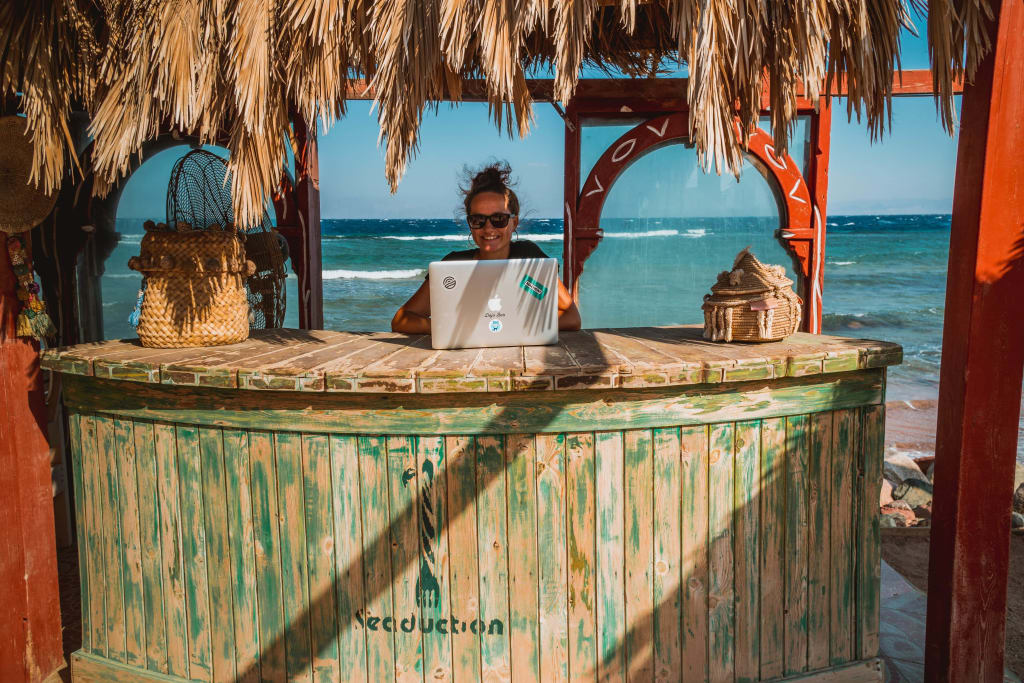
Fancy yourself a storyteller who's got a way with words? Any smart traveler will confirm that they do a lot of research before a trip, and one of the most valuable online resources happens to be the experiences and opinions of seasoned travelers like you!
One quick Google search of a specific adventure, country, or piece of travel advice can really help someone out who will be traveling there soon. These days, experiences are valued more than mere things, and travel writing is becoming more in demand and popular as a profession .
Aspiring digital nomads often find success after years of freelance writing , collecting stamps in their passport, collaborating with other writers, and building their resume and brand. Even after all that hard work, few find the success they hoped for because it is such a competitive line of work.
With so many talented travelers in search of free trips, hotel stays, flights, their name recognized in travel media, brand deals, and so much more, it can be hard to stand out in the crowd.
Those perfectly curated travel photos you see on Instagram weren't always so expertly crafted. The hoard of travel "influencers" on social media weren't always able to travel so freely. It's no holiday! You may be traveling in your spare time, but you're still on the job as a travel writer attempting to balance work and play .
But once you make it as a travel writer, you'll never want to go back .
In exchange for your dedication and proficiency as a writer, you might just be able to snag those free perks! Unless you're writing for a specific agency, you'll get to be your own boss.
Travel writers live by their own schedule, which is based on a system that works for them. They are constantly on the go, brimming with ideas, and creating beautiful content that fills their wandering souls with purpose. Finding creative and financial independence is not only fulfilling but life-changing .
So how do you become a travel writer? How do you record your stories in an authentic and relatable way that people can connect with? But most importantly, how do you get paid to do it?
Read more: What is location independence and how can you get it?
Here are some actionable steps we've compiled so you can embark on your journey towards becoming a paid travel writer.
1. develop the right mindset, 2. write constantly, 3. read constantly, 4. be able to travel, 5. decide what kind of writing you want to do, 6. create a website and start a blog, 7. build your brand, 8. get on social media, 9. network, network, network, 10. pick a niche, or don't, 11. take better photos and videos, 12. be aware of what's happening in the travel space, 13. learn the rules of travel writing, and then break them, 14. let your friends, teachers, and family critique your writing, 15. go for substance instead of cliche, 16. pitch your writing when you're ready, 17. email your favorite brands, bloggers, and travel writers about collaborating, 18. prepare for those rejection emails, 19. persevere and be consistent, 20. continue to build your writing resume, 20 expert tips for getting started in travel writing.
This is going to be hard. You're going against the grain and trying to achieve something that, a couple decades ago, was not a substantial way to make a living.
Not only will it be an uphill climb, it will be so worth it if you take the necessary steps! Have faith in your skills as a writer and storyteller, and do everything you can to improve and perfect your skills. Never stop learning and becoming better .
You have unique talents that the world should see. Now more than ever, it is much easier to get your name and work out there in order to be considered for a travel writing position.
Gather all the tools you need, make a game plan with these steps in mind, and plan to turn many of your experiences into stories.
This one's a no-brainer. If you're going to become a travel writer, you need to practice writing!
Whether you're going to the beach for summer vacation, exploring the new town you've just moved to, or going on an exotic trip overseas, write about it. Think about a cool experience you had when you met someone on the street. Refresh your memory as you think back to a fun trip you took with your parents when you were young. Be descriptive! What did you see, smell, feel, and hear on your adventure?
It doesn't have to be a novel, but more like a journal entry . Find a good flow as you pour your thoughts and emotions onto the page, follow your mind's tangents, and see where it takes you.
There's no better way to hone your writing skills than to study the works of other travel writers .
Subscribe to magazines like National Geographic , Travel & Leisure , or Lonely Planet and let your wanderlust take over as you dive in.
Browse top travel blogs that have made the first page of Google or have received recognition awards.
Pick up books by authors like Bill Bryson, Paul Theroux, and Jack Kerouac and read them cover to cover.
Read things that aren't about travel, including books written by the "greats" and more contemporary authors .
What's all the reading for, you ask? This will help you get acquainted with what genres are out there, choose what writing styles you like best, and determine what it is that makes their writing so captivating. Voila! You can now fuse some of their techniques with your own creative abilities to write even better stories.
Many people have one idea in their heads about travel writers. We tend to envision the trips they take as glamorous, round-the-world adventures that we simply can't manage at this stage in our busy lives.
What's holding you back from becoming a travel writer? You may have a full-time job, a family with kids to care for, and a measly seven dollars in your savings account stopping you from traveling. But the fact is, you need to travel to write about it! Thankfully, it doesn't have to be as glamorous as you think, especially not at first.
Take all the excuses you've made about not being able to travel and come up with solutions to each of them . Work them out. If you want it bad enough — to be a travel writer and sell your stories — you'll do what it takes to make it happen.
Your specific obstacles require specific problem-solving. Keep in mind that you don't have to go to another country for it to count as "real" travel. Head to the next city or state over for a mini road trip or weekend getaway. You'd be surprised what adventures you can find near you!
Do you want to write guidebooks, hotel reviews, ebooks, magazines, or full-blown novels? How about writing solo, collaborating with other travel writers, or for a travel agency?
Travel writing isn't all about service pieces! If your idea is unique to your experience, has a strong voice, and isn't just a generic listicle, you will stand out that much more from the sea of travel content out there.
Blaze a new trail in creating the content you are proud of.

Each year, starting a blog becomes easier and easier. These days, with just an idea and a few clicks you can lock down a website domain and start a blog all on your own! No need to pay for anyone to set it up for you! Websites like Bluehost can host your website, or you can build a gorgeous blog with Wordpress or Squarespace .
Load up your personalized site with information about you, your story, photo and video content, and your articles and you've got yourself a professional online portfolio. Your website will act as a hub for those who are searching the web for your content and give potential employers a great place to see more of your awesome work.
Don't miss out: Get paid to travel: 9 ways to make money on the road .
In order to become a travel writer, it's important to establish yourself as an authority on the topics you're writing about, even though you might be just starting out.
The more confident you are about your own writing, the more believable and trustworthy you'll become as a travel writer .
Building your brand is all about showing the world who you are. Choose a memorable name for your blog (make sure it hasn't been used before!) that represents you well and roll with it!
Instagram, Facebook, Twitter, and Pinterest are the most popular social media sites that travel writers should be on. If someone finds your content online and enjoys it, they'll likely want to follow you on social media to get updates.
It can sometimes be tedious to push out consistent content on your social media accounts, especially if you're not used to it. Thankfully there are lots of social scheduling programs that can save you time!
Do your best to post quality content with good captions as opposed to ten mediocre posts in one day just to get something onto your account .
Each social media site has their own specific algorithm that you can read up on to get even better at making sure your posts are getting seen by your audience. Being on social media is really important for a travel writer because you are building a community that values your work and is hungry for more.
Cherish the people that join your little corner of the internet, and don't focus on how many followers you have. Engage with them authentically and they will stay loyal to you.
While it is important to build relationships online, it isn't everything. Go to a travel writing workshop or writing course and exchange contact info with your peers.
If you want to do even more networking, head to a travel writers meet-up! There are several different annual seminars held throughout the year in different locations, whether they are stateside or abroad. Sign up for one, and if you're especially ambitious, make your own business cards to hand out to fellow travel writers.
The more connections you have, the better!
Niches are basically what type of travel writing you'd like to do. Are you all about eco-tourism and environmentally-friendly adventures? Do you want to focus on traveling with a family or budget travel ? Are you an expert on solo travel or do you prefer to travel as a couple?
In recent years, picking a niche has become less of a necessity for travel writers to stand out and more of an option. If your writing and strategy are excellent, you'll be heard one way or another.

Let's face it, with the rise of Instagram, sometimes it takes a gorgeous photo to attract someone's attention. Some travel writing gigs will choose the visual content that accompanies your work, but if you're starting your own blog you should learn your way around a DSLR or phone camera.
There are lots of online courses to help you become a better travel photographer or videographer, like Skillshare . You'll also learn how to edit photos and videos in new ways, avoid over-editing, and polish your content effectively.
If you want to be in the loop about everything going on in the travel industry, find a newsletter online that will give you the scoop on everything from fluctuating hotel prices to insider travel tips.
To write like a pro, you need to learn from a pro.
Learn from travel writers you're currently following by paying attention to how they structure their paragraphs, how formal or informal their tone is, and how digestible their content is .
You can even pick up books on travel writing on Amazon to help you practice. Now take what you've learned and figure out what rules you don’t need to adhere to. It's your writing, after all!
Finding a support system is crucial to becoming a travel writer.
If you aren't particularly skilled at grammar, spelling, or punctuation, having someone review it for you can do wonders. You never know what little mistakes a pair of fresh eyes can catch, and it can help you learn from those mistakes and get better.
There are tons of words in travel writing that are overused. Try to come up with more original ways of describing a place rather than repeating phrases you've read over and over. Using genuinely descriptive dialog will be more refreshing to the reader and seem less like fluff.
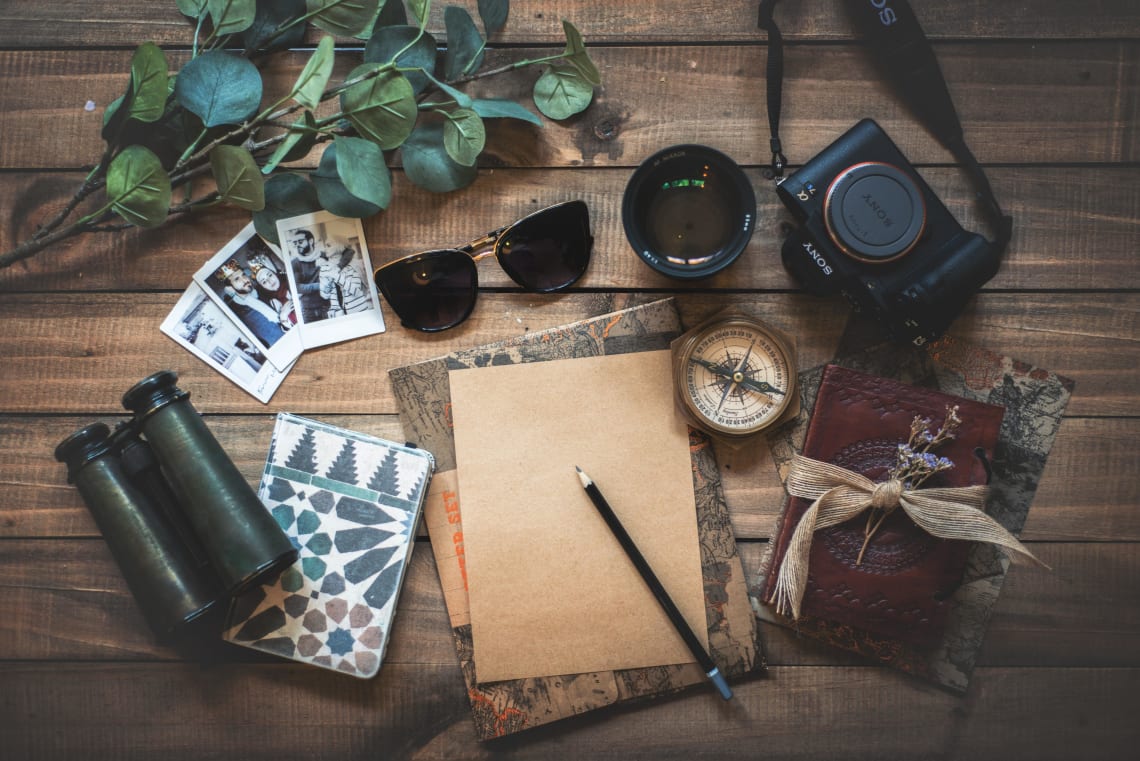
After months and possibly years of honing your craft, it's time to pitch.
Study the publications you wish to be a part of, and put yourself in the editor's seat . What are they looking for? What are their guidelines? Are they looking for proposals or completed articles?
Find the editors and use their names in your professional email pitch. Keep it somewhat short and sweet, but packed with intention and helpful information about your content.
If you're looking for a more informal travel writing job, check out the contact page of your favorite travel gear brands to score a potential product review.
Want to collaborate with one of your favorite travel writers? Reach out to them via their business email and see if you can do an article for/with them in exchange for exposure on their website.
If you have a company in mind whose brand and goals align with yours, contact them too!
Not every company, blogger, or opportunity will accept you. This is mainly because they aren't looking for travel writers at this time or you don't meet all their preferred requirements.
They will usually send a polite email back to you to let you know. If you want to become a travel writer, you should learn how to handle rejection and avoid taking it personally.
There are countless opportunities out there for you to seize, so learn to move on and find success elsewhere when this occurs.
No matter how many rejection emails you get, keep your chin up and keep sending your work to people! Send different pitches to the same people, if you must. If they don't respond within a week, send them a professional follow-up message. But don't give up .
If rejection comes your way, it will give you more time to not only excel at writing, but you'll be able to write more!
Keep your content flowing and consistent, and soon you'll have a portfolio or website chock-full of great content for future employers to feast their eyes on. You've got this!
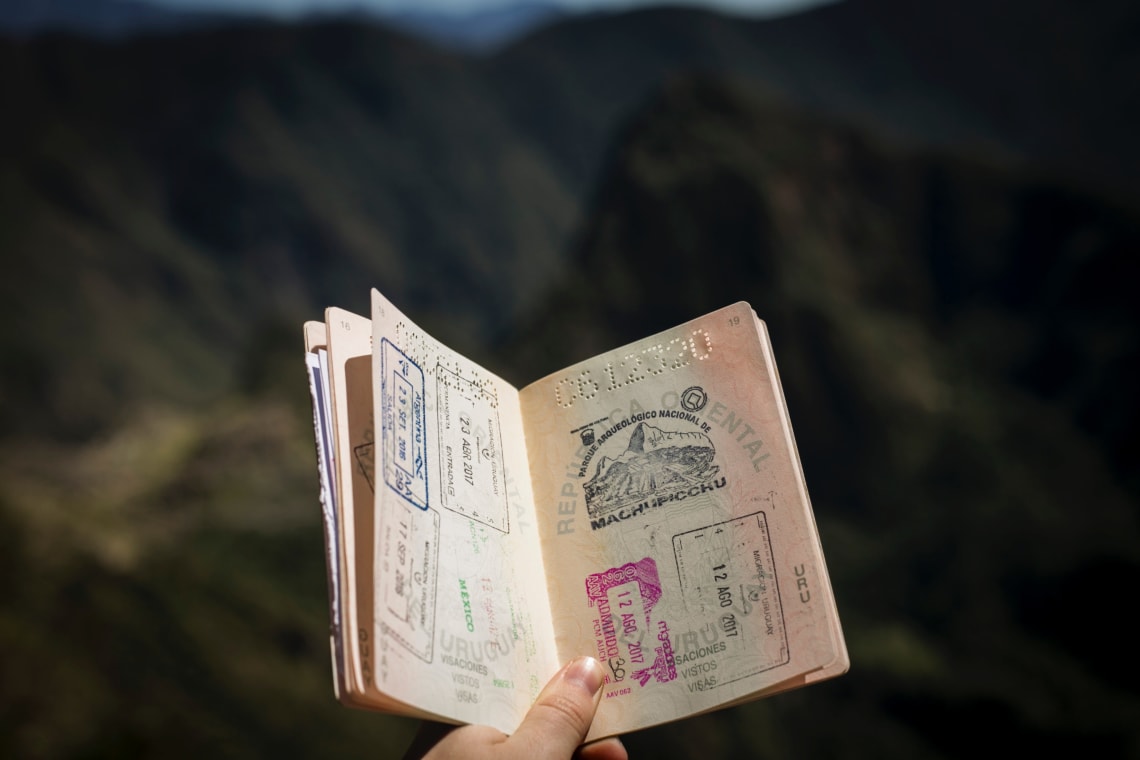
As you can see, a travel writer wears many hats! Social media guru, photographer, editor, videographer, proofreader, negotiator — these are just a few of the skills a travel writer needs to improve upon to make their dreams a reality.
This job requires self-discipline, motivation, and a willingness to put yourself out there by stepping out of your comfort zone .
Think you have what it takes to be a travel writer and sell your stories? Take the leap.
Invest in yourself by learning all you can about the travel industry, become well-versed on responsible travel , attend meet-ups, workshops, online courses, and never lose sight of your goals.
Keep that creative and curious spark alive, my friend, and you'll be well on your way to being a digital nomad doing what you love!
Join the community!
Create a free Worldpackers account to discover volunteer experiences perfect for you and get access to exclusive travel discounts!
Rachael Grow
Let's Grow There
Over the past five years I have worn many hats as a creative freelancer and have been able to pursue adventures across the globe. To me, travel is more than checking a box or sitting on the perfect beach all day. Travel is about self-discovery, keeping an open mind, and learning through culture immersion. In 2017 I was chosen by one of my favorite travel bloggers, The Blonde Abroad, to attend her first ever blogging retreat in Bali with a handful of other inspiring bloggers. It was truly a dream that taught me so much more than I could imagine. Fast-forward to 2019 when I was given the role of one of the lead English writer for Worldpackers. My in-depth articles touched on subjects like volunteer work, overcoming post-travel blues, outdoorsy tips, and boldly adventuring. Inner growth is my jam.
Be part of the Worldpackers Community
Already have an account, are you a host, leave your comment here.
Write here your questions and greetings to the author
Apr 11, 2020
I needed a post like that. I am about to write my first text as a travel writer and I thing I need some tips like how to turn my teste interesting.
Jan 07, 2021
I enjoyed tour article immensely. Thank you for the great tips and candid honesty. I have a niche in mind and am about to embark on a new adventure with travel writing. Thank you again.
Mar 13, 2021
Apr 20, 2021
Pleas I have been traveling for over fifteen years and need to write my travel blog but. How do I get paid
Oct 29, 2022
“” 6. 9”Zac. T r r c. C
Rajvir Singh
Jul 31, 2021
Helpful information all thanks
Nov 19, 2022
May 11, 2023
Assalomu alaykum hamga
More about this topic

How to become a traveling bartender with Worldpackers
A day in the life of Worldpacking: how to balance working and traveling the world
10 easy and creative ways to make money while traveling
How do Worldpackers trips work?
As a member, you can contact as many hosts and travel safely as many times as you want.
Choose your plan to travel with Worldpackers as many times as you like.
Complete your profile, watch the video lessons in the Academy, and earn certificates to stand out to hosts.
Apply to as many positions as you like, and get in contact with our verified hosts.
If a host thinks you’re a good fit for their position, they’ll pre-approve you.
Get your documents and tickets ready for your volunteer trip.
Confirm your trip to enjoy all of the safety of Worldpackers.
Have a transformative experience and make a positive impact on the world.
If anything doesn’t go as planned with a host, count on the WP Safeguard and our highly responsive support team!
After volunteering, you and your host exchange reviews.
With positive reviews, you’ll stand out to hosts and get even more benefits.
Save up to $333 using promo code: PLOT22

1-800-243-9645
- Date: June 19, 2018
- Author: Chaunie Brusie
- Category: Writing for Adults Blog
- Tags: Craft , Writing for Adults , Writing for Magazines
We teach our students how to write and get published! View our Course Catalog >
How To Get Started as a Travel Writer
Tips for turning the dream into a reality.
Getting paid to travel is the ultimate dream of any writer, right? Lounging on white, sandy beaches with the crystal-clear blue sparkling water just beckoning you for a day of fun, all in the name of “work.” I can’t imagine a better gig, but for many writers, it’s not just a dream, but a reality. It took me about five years into my career as a freelance writer before I realized that travel writing was an actual thing. Not like an occasional perk of writing or something that writers did now and then to write off a business trip, but an actual-to-goodness job that can pay you enough to live off. I was amazed that such a career could exist and decided right then and there that I wanted to be a travel writer. But how does one achieve the elusive title of “travel writer?” Here are some tips I’ve discovered along my quest to join the world of travel writing. Realize it’s not about free vacations I have joined a few online travel writing groups in my hopes of becoming a travel writer and one of the most frequently-expressed frustrations I hear from the “real” travel writers in the group is that other people tend to think that travel writing is all about free vacations and fun; but it’s not. Just like any other job, travel writing involves hard work and aspects that are decidedly unglamorous, from hotels without hot water to horrible flight delays to traveling through mysterious viruses. Don’t go into travel writing thinking it’s just a way to score free trips or you’ll set yourself up for failure. Make it known that you are a travel writer Think back to when you first got started as a writer. You had to first declare to yourself and to the world that you were a writer, right? That meant telling your family and friends, putting “writer” in your bio, or maybe getting some business cards printed. Becoming a travel writer is no different. Name and brand yourself as a travel writer and work to establish your credibility in the field. Especially if you’re active on online systems such as LinkedIn or Contently, adding the world “travel writer” to your bio, resume, or credentials can help editors search for travel writers find you. Don’t depend on press trips If you haven’t heard of them before, press trips are these seemingly magical unicorns where PR companies working with resorts and travel destinations will host journalists to the property to show them the attributes and aspects of the vacation experience. The thought is, of course, that the journalists will then write about the destination. And while they can be a great idea in theory, it is more challenging to write an unbiased article about a free, all-inclusive vacation experience you have had vs. say, paying for it yourself and seeing how a “normal” guest would be treated. Also, accepting press trips comes at a price because if you take one, some prominent publications, such as the New York Times , will blacklist you forever, meaning you can’t write for them for travel related pieces. Ouch. Take a course There are many helpful courses you can take that can help introduce you to the basics of travel writing. For instance, Holly Johnson is a writer and blogger who has been able to make a lot of money from writing and traveling. To the tune of $200K a year, being able to retire her husband, and taking some exotic vacation pretty much every month. Not too shabby. Start local You don’t have to travel the world to be a professional travel writer. Start small! Try looking in your local area, region, or state for attractions or experiences that are well-known to you, but maybe not the rest of the world. There are hidden gems and cultural destinations, foods, customs, and traditions no matter where you are, so you might just be surprised by what you can discover near you as you get started in travel writing. Avoid travel writing clichés If you want to stand out as a travel writer, you need to avoid falling into the trap of writing using only clichéd travel phrases. Don’t write about your time spent “meandering the charming streets sampling the delicious local cuisine” because let’s face it, that’s been done. Instead, look for the original places and people that can make your stories come to life.
Additional resources – Tips for getting started as a travel writer from Lonely Planet . As a fairly new travel writer myself, I found these tips enormously helpful, both in terms of practical aspects to look for while you’re traveling and tips for actually writing a travel piece. – New York Times travel writing policy . Curious about what a prestigious travel publication like the NYT actually requires of its writers? This FAQ comes straight from a former NYT editor himself.
Chaunie Brusie is a labor and delivery nurse turned writer. She lives in Michigan with her husband, four young kids, and a flock of chickens. Find her at chauniebrusie.com .

Revision: Why Writers Need Objective Feedback

Revision: The Importance of a Critique

Up Close and Personal: Writing Inside Viewpoints
Leave a reply cancel reply.
Your email address will not be published. Required fields are marked *
Save my name, email, and website in this browser for the next time I comment.
Post comment
Become a better writer today
1000 N. West Street #1200, Wilmington, DE 19801
© 2024 Direct Learning Systems, Inc. All rights reserved.
Privacy Policy.
Licensure & Memberships
Recommended for college credits by the Connecticut Board for State Academic Awards
College credits obtained through Charter Oak State College
Approved as a private business and trade school in the state of Delaware

Quick Links
Critique Service
Bookstore
Program Catalog
What Our Students Say
Academic Info
How it Works
Request Info
Submit Writing Sample
Admission Requirements
Writing Contests
Incarcerated Course
© 2024 Direct Learning Systems, Inc. All rights reserved.
What Our Instructors Say
Free Assessment
Matador Original Series
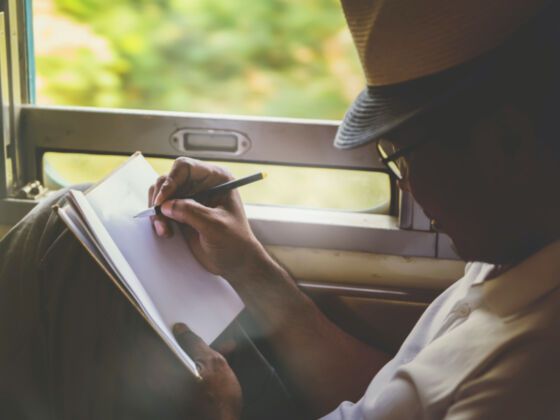
How to Become a Travel Writer (Seriously)
Start reading and don’t stop.
Read all the “greats,” but don’t skip the more obscure writers. Read magazines. Get yourself a library card if you don’t have one, and if you can’t do that, check Google Books and Google Magazines.
The idea isn’t to imitate, but to simply know what — what genres, what styles, what writers — came before you, as well as who your contemporaries are.
2. Redefine the genre of travel writing.
“Travel writing” includes hotel reviews and destination guides, published in guidebooks and in glossy travel magazines. But travel writing’s more than service pieces.
Check out this genre-busting, long-format narrative by Porter Fox . Or this blog post by multi-genre writer Elizabeth Eslami, which I’d categorize as “place-based writing.”
In a way, all movement and all settling is travel, and so the stories we tell about these experiences are “travel writing” in the broadest sense of the word. Even if some editors don’t see it that way.
3. Start a blog.
In the not-so-distant past, a writer had to have a decent portfolio of publication credits to be considered a “travel writer,” and certainly to be published in a glossy mag.
Not so anymore.
Thousands of writers have published their writing primarily or exclusively on their blogs. Some have gotten book deals. Some have gotten print gigs. Some get offers of free travel . And some get nothing more than the recognition that their writing means something to a random reader who stumbled across their blog doing a Google search.
Not sure how to get started? Check out Matador’s stockpile of blogging tips.
4. Develop your online presence.
Use Facebook, Twitter, and other social media platforms to connect with other writers, editors, and readers.
5. Build a network, online and off.
Start your blog, set up a Facebook and Twitter account, but make sure you get offline, too. Stories and relationships don’t develop best through a screen. That only happens at ground level.
MatadorU hosts frequent workshops and events around the world.
6. Travel. But not just to “exotic” places.
You’ve got a 9-5’er. You’ve got kids. You’ve got debt. You’ve got no money. You’ve got an expired passport.
What you’ve got are excuses. A walk beyond your front door is travel. The only thing you need for a trip is curiosity.
7. Look for stories everywhere.
Often, the most interesting stories aren’t waiting in some far-flung place for you to come along and unearth them. Instead, they’re right beside you, at ground level .
8. Avoid cliches.
If you’re not sure what cliches we’re talking about, you need to go back to step 1 (READ). You can also consult our articles, 10 words and phrases we never want to see in travel writing again and 5 more words we never want to see in travel writing again .
How many hidden gems and best kept secrets can there be in the world, anyway?
9. Learn when to break the writing rules you’ve been taught.
One of the challenges new travel writers often confront is unlearning rules of narrative they were taught in school: “Always write in the third person.” “Every paragraph must have three to five sentences.” “Every story must have an introductory paragraph, three body paragraphs, and a concluding paragraph.”
It’s not narrative that’s inflexible; it’s the writer. Don’t be afraid to play with forms or break rules.
10. Commit to the craft.
Tip #9 notwithstanding, there are some rules that shouldn’t be broken. Spelling and punctuation should be solid if you intend to submit your writing for publication, whether online or in print. Your syntax and word usage should be on point. Commit to the craft of writing. Simply telling a good story isn’t enough.
11. Get a writing partner.
Writing has some pretty solitary moments, and reviewing your work with a writing partner (especially if you have problems with spelling, grammar, etc.) can be invaluable. Participating in a writers’ group can be even more useful; you’ll have a support network of writers who can offer constructive feedback.
12. Prepare yourself for rejection.
Every writer experiences rejection. The sooner you learn how to handle it and move on, the happier and more successful you’ll be as a travel writer.
13. Be professional.
Learn how to pitch and query. Don’t make your problems an editor’s problems.
14. Invest in yourself.
If you want to pursue travel writing as a profession, consider making some investments in your professional development. The travel writing, travel photography, and travel filmmaking programs of MatadorU teach you the craft and business of this line of work.
15. Develop other relevant skills.
Assignments often go to writers who also have other relevant skills, especially in photography. If you can offer an editor a complete package of writing and photos, you’ll save him/her lots of time.
16. Use prompts if you have writers’ block.
MatadorU’s Dean of Education, Joshua Johnson, rounded up three websites that are full of prompts to get your pen moving again.
17. Don’t tell the reader how to feel or what to think.
Way too much travel writing is characterized by the author/narrator telling the reader how to feel or what to think. The ways in which we experience “the exotic” and treat it as precious and the ways, in particular, we see people , dramatically shape the ways we talk about them and the impressions our interpretations leave on the reader.
18. But don’t think you’re objective, either.
There’s no such thing as objectivity .
19. Practice “10 Possibilities.”
In order to test your own ways of seeing and your default interpretations, start practicing a game a friend of mine calls “10 Possibilities.” For every experience you’re inclined to classify as “strange,” “exotic,” “amazing,” or otherwise otherworldly, challenge yourself to come up with 10 possibilities that could explain why you’re seeing what you’re seeing.
It’s obvious enough, I suppose, but what distinguishes an “aspiring writer” from a “writer” is that the latter actually…writes. At Matador, we’ve taken to calling this “ass-to-chair” time.
21. Learn how to use an anecdote.
So much beginning travel writing is what I call “This is what I did on my summer vacation” essays: chronologically linear stories that detail every single activity, meal, and person the writer has encountered in his or her travels. 98% of that material isn’t relevant.
Learn how to use anecdotes and scenes in your storytelling.
22. Accept the fact that luck, timing, circumstance, and knowing people often play a big role in a writer’s life.
Don’t underestimate the ‘right place, right time’ scenario. While you might not have much control over that, you do have control over being ready, willing, and able to take advantage of any opportunities that come your way. – Matador Managing Editor Carlo Alcos
In my own work, and among many of my freelance travel writing colleagues, luck, timing, circumstance, and knowing people have played as important a role as being a good writer. * This post was originally published on January 12, 2011.
Trending Now
The tallest hotels around the world with jaw-dropping city views, 17 of the coolest airbnbs near disney world, orlando, the 11 best airbnbs in buenos aires, 10 of the best caribbean sex retreats for couples, these colorado airbnbs are cannabis-friendly and perfect for travelers, discover matador, adventure travel, train travel, national parks, beaches and islands, ski and snow.
- EXPLORE Random Article
How to Be a Travel Writer
Last Updated: January 31, 2023 Approved
This article was co-authored by Stephanie Wong Ken, MFA . Stephanie Wong Ken is a writer based in Canada. Stephanie's writing has appeared in Joyland, Catapult, Pithead Chapel, Cosmonaut's Avenue, and other publications. She holds an MFA in Fiction and Creative Writing from Portland State University. There are 11 references cited in this article, which can be found at the bottom of the page. wikiHow marks an article as reader-approved once it receives enough positive feedback. In this case, 100% of readers who voted found the article helpful, earning it our reader-approved status. This article has been viewed 76,851 times.
A travel writer explores new destinations and shares observations with others using the written word. One of the most important requirements for this type of work is a desire to travel and experience new environments and cultures. Physical stamina, an observant mind and a talent for descriptive language are just a few of the qualities necessary for becoming a travel writer.
Understanding the Job Requirements

- Many travel writers work for themselves as freelancers and work contract by contract, story by story. This means you may not have a steady income from travel writing and it can be difficult to make a high income when you are commissioned to write for a publication. [1] X Research source
- Currently, rates for a 500-word article can range from $10 to $1,000. Often, seasoned writers with years of experience writing for big print publications will earn the higher end of the spectrum for one article. Many travel writers do not earn more than $25 - $300 an article. If you are able to land a big feature or a cover story, you will be paid more. However, it can be difficult to land the more lucrative stories and you will often have to write many articles on a regular basis to support yourself financially in this career.

- Instead, you will need to be willing to freelance as a writer as you build up your portfolio. This means you will have to pitch articles to multiple publications on a consistent basis and write many articles for very little pay, perhaps for several years. As a freelancer, you will also need to arrange your own travel accommodations, your itinerary and spend several days traveling on your own.
- To make travel writing your full time job, you will need to build up contacts and credentials in the industry. This can take several years of working from contract to contract until you make a name for yourself. Many travel writers work other, more sustainable jobs while they travel write on the side.

- It’s important that you are a curious and perceptive traveller who is comfortable roughing it when you have to. You should also be willing to pitch your ideas to an editor and be prepared to promote your work whenever possible. As a beginning travel writer, you will need to showcase writing talent and a zest for adventure, as well as an ability to sell your ideas and writing to editors.
Finding Your Niche in the Market

- Travel writer Bill Bryson: Bryson is one of the most successful travel writers in the genre and is well respected in England for his travel book on English life, Notes on a Small Island, as well as his American travel book, The Lost Continent".Bryson is known for his dry and witty writing, and often combines memoir and travel writing in his work. [4] X Research source
- Travel writer Kate Adie: Adie is a former BBC chief correspondent who covered war zones in the 1980s across the world. [5] X Research source She has written an autobiographical book about her travels in dangerous places called The Kindness of Strangers that is popular among travel writers. Adie’s writing is characterized by dry humor, a knack for finding the absurd in a situation, and a strong grasp on travelling to foreign and often dangerous destinations. [6] X Research source
- The Lazy Travelers Blog: This blog, started by two American best friends, recently won Best Travel Weblog at the 2014 Bloggies. [7] X Research source Characterized by the tagline “conquering the globe one glass of wine at a time”, the bloggers explore local and overseas destinations with a casual, playful tone and focus on the average traveller who may want to see popular sites, eat good food, and find photography worthy spots in a new city. [8] X Research source
- The EscapeArtistes Blog: This blog was a finalist for Best Travel Weblog at the 2014 Bloggies, [9] X Research source and has the tagline “Postcards from the edge.” Written by a British mother, living with her young son in Bali, the blog explores life as an ex-pat as well as travelling with a young child through Asia and Europe. The writing style is friendly and full of dry wit, appealing to readers who are looking for a unique take on the standard travel blog. [10] X Research source
- Crusoe the Celebrity Dachshund: This off beat blog is immensely popular online and features the travel adventures of a Dachshund named Crusoe, with the tagline: “The wiener dog who thinks he’s more of a celebrity than he really is (for now)." [11] X Research source

- You may find a travel magazine that you enjoy and want to write for, or have a specific magazine in mind. Reading the publication before you pitch an article idea will also allow you to customize the pitch letter based on the tone and style of the publication. This could help your pitch to get noticed by the editor, as editors often pay more attention to a pitch that relates to the mandate of their publication. [13] X Research source

- Focus on three main elements: being professional, being useful, and being personal. Though your blog can have a casual, friendly tone, you should still treat it like a professional site and avoid using an ugly design.
- You should also edit every blog post for grammatical errors and spelling errors. Your blog should also serve a purpose and provide your readers with useful information about a location, an event, or a destination. Your reader will want to know what she can get from reading your blog and feel as though it is worth checking your blog on a daily basis. Finally, your blog should be personal and demonstrate your unique writing style or voice.
- Avoid formal language or complex sentence structure. Try to appeal to the average reader by using an open, accessible tone and playing to your unique perspective.
Building Your Credentials

- Your portfolio or website should have your biography, a blog documenting your past traveling experiences and any upcoming travel, with lots of detailed write ups of your experiences, as well as social media feeds where you can promote and share your articles, photos and videos. [14] X Research source
- Use your portfolio as a platform to engage readers, viewers, and editors in the industry. Linking to your website when you meet an editor or a possible writing contact will ensure someone is paying attention to your online persona and could lead to writing contracts or offers.

- As a travel writer, you will need to be able to move past superficial descriptions of a place and see a place in an authentic and interesting way. Writing about things in your area will allow you to build a strong body of work around a certain niche or location and help you practice “seeing” a place from a deeper, more engaging perspective.
- One way you can create your own local writing prompts is to google your local place + “travel”. For example, “Reno travel”. Look at what comes up first in the search results and ask yourself if you could provide a well written article with more useful information. If the answer is yes, you may have found your first travel writing story.

- Focus on introducing yourself and asking more seasoned writers who they are working for and what they are currently working on. This will help to give you a sense of the current state of the industry and what types of stories editors are looking for.
Getting Published

- If you decide to pitch an article idea, always follow the submission guidelines posted on the publication’s website or in their print publication.
- A good rule of thumb is to keep your pitch letters short, no more than two to three paragraphs, to show that you know the types of stories the publication publishes, and to have a good hook at the beginning of your letter to keep the editor engaged. You should also link to an online portfolio or website, and address the letter to the travel writing editor of the publication, not the editor-in-chief of the publication, to ensure the letter ends up in the right hands.
Expert Q&A
- If you do any amount of traveling, you're likely to soon become interested in packing light to make things simpler and easier. Thanks Helpful 1 Not Helpful 0
You Might Also Like

- ↑ http://www.transitionsabroad.com/listings/travel/travel_writing/seven_myths_of_being_a_travel_writer.shtml
- ↑ http://www.theguardian.com/careers/breaking-into-travel-journalism
- ↑ http://www.theguardian.com/books/2015/mar/14/bill-bryson-books-interview-follow-up-notes-from-a-small-island
- ↑ http://news.bbc.co.uk/onthisday/hi/correspondents/newsid_2625000/2625875.stm
- ↑ http://www.independent.co.uk/arts-entertainment/books/reviews/the-kindness-of-strangers-by-kate-adie-139406.html
- ↑ http://2014.bloggi.es/
- ↑ http://thelazytravelers.com/
- ↑ http://www.escapeartistes.com/about/
- ↑ http://www.celebritydachshund.com/
- ↑ http://www.allyoucanread.com/top-10-travel-magazines/
- ↑ http://www.lonelyplanet.com/travel-tips-and-articles/77797
About this article

To be a travel writer, start by reading articles by successful travel writers in a variety of mediums, such as blogs, online magazines, or newspapers. Additionally, look at well regarded travel magazines and note what types of articles are being published the most. Once you survey the field a bit, start a travel blog. For your first several posts, write about your hometown or home city, including local events and activities, new food crazes, or music festivals. You can also use this material as a submission to a local publication to help build your portfolio. To learn how to look for travel writing opportunities in the classifieds, keep reading! Did this summary help you? Yes No
Reader Success Stories
Vaibhav Pawar
Dec 14, 2016
Did this article help you?
Scott Tanner
Jun 11, 2017
Moinak Sarkar
Feb 11, 2017
Angelo Zomparelli
Oct 10, 2016
Patrick Cruise
Nov 23, 2017

- About wikiHow
- Terms of Use
- Privacy Policy
- Do Not Sell or Share My Info
- Not Selling Info
What does a travel writer do?
Would you make a good travel writer? Take our career test and find your match with over 800 careers.
What is a Travel Writer?
A travel writer is a writer who specializes in documenting their travel experiences, providing insights into the places they visit, and sharing recommendations for other travelers. Their job is to create compelling narratives and stories about their travels, including descriptions of the people, culture, and geography of the places they visit. Travel writers often work for newspapers, magazines, and travel websites, and they may also write books or blogs about their experiences. They may travel to destinations across the world, from major cities to remote locations, and may have expertise in specific areas or types of travel, such as adventure travel or luxury travel.
To be a successful travel writer, one needs to have excellent writing skills, the ability to capture the essence of a place, and a passion for travel. They must be able to convey their experiences and observations in a way that engages and inspires readers, and they should have a keen eye for detail, as well as the ability to research and fact-check information. Travel writers may also need to have photography or videography skills to capture the visual aspects of their travels.
What does a Travel Writer do?

Travel writers play a vital role in shaping our understanding of the world and its diverse cultures. Through their writings, they offer a window into the unique experiences and perspectives of different people and places, helping us to broaden our horizons and expand our knowledge. They not only provide practical information about destinations but also capture the essence of a place, its people, history, and culture, making us feel as if we have been there ourselves.
Duties and Responsibilities The duties and responsibilities of travel writers can vary depending on the specific role and employer. However, some common duties and responsibilities of travel writers include:
- Researching and exploring destinations: Travel writers need to conduct extensive research before visiting a destination. They need to know the history, culture, and attractions of the place they're writing about, as well as practical information like transportation options, accommodation, and safety considerations. Once they arrive, travel writers may visit museums, galleries, historical sites, and other tourist attractions. They may also attend local events, try local foods, and interact with locals to get a better sense of the destination.
- Writing engaging and informative content: Travel writers need to write engaging and informative content that captures the attention of their audience. They need to be able to convey the sights, sounds, and feelings of a destination, and make readers feel like they're actually there. Travel writers need to be skilled in storytelling, using vivid descriptions, and painting a picture with words.
- Developing story ideas: Travel writers need to come up with fresh and interesting story ideas that will appeal to their audience. They may draw inspiration from their own experiences, or from trends in the travel industry. They need to be able to identify unique angles and highlight lesser-known attractions or hidden gems.
- Taking photographs and videos: Travel writers may be required to take photographs and videos to accompany their written content. They need to have a good eye for composition, lighting, and framing. They may also need to edit their photos and videos using software like Adobe Photoshop or Final Cut Pro.
- Editing and proofreading: Travel writers need to be skilled in editing and proofreading their own work. They need to check for accuracy, clarity, and consistency, as well as correct any spelling or grammatical errors.
- Meeting deadlines: Travel writers need to be able to work to tight deadlines, as they may be working on multiple projects at once. They need to be organized and able to manage their time effectively to ensure they deliver high-quality content on time.
- Networking and building relationships: Travel writers need to network and build relationships with other writers, editors, and industry professionals. This can help them stay up to date with trends and opportunities, as well as get their work published in reputable publications.
- Adhering to ethical standards: Travel writers need to adhere to ethical standards when writing about destinations. This includes being honest and truthful in their writing, respecting local customs and traditions, and avoiding any conflicts of interest or biased reporting.
Types of Travel Writers There are various types of travel writers, each with their own specific focus and area of expertise. Here are some common types of travel writers:
- Destination-Focused Writers: These writers specialize in writing about specific destinations, such as countries, cities, or regions. They may provide practical information like transportation options and accommodation, as well as highlight attractions, events, and local culture.
- Adventure and Outdoor Writers: These writers focus on outdoor activities like hiking, camping, and skiing. They may write about their own experiences or provide advice and tips for readers interested in outdoor adventure.
- Food and Drink Travel Writers: These writers specialize in writing about food and drink in various parts of the world, highlighting local cuisine and beverages. They may recommend restaurants, cafes, and bars, as well as provide recipes and cooking tips.
- Luxury Travel Writers: These writers focus on high-end travel experiences like five-star hotels, luxury cruises, and private tours. They may provide recommendations for luxury travel destinations and experiences, as well as tips for travelers looking to splurge on their next vacation.
- Budget Travel Writers: These writers focus on budget-friendly travel options, providing advice on how to travel on a budget and still have an enjoyable experience. They may recommend budget-friendly destinations and accommodations, as well as provide tips on how to save money on transportation, food, and attractions.
- Family Travel Writers: These writers focus on family-friendly travel experiences, providing advice and recommendations for families traveling with children. They may highlight family-friendly destinations, accommodations, and attractions, as well as provide tips on traveling with children.
- Cultural and Historical Writers: These writers focus on cultural and historical attractions, highlighting museums, historical sites, and cultural events. They may provide insights into local customs and traditions, as well as provide recommendations for cultural and historical destinations.
What is the workplace of a Travel Writer like?
The workplace of a travel writer can vary greatly depending on the specific writer's job requirements. Travel writers may work remotely, traveling to various destinations to conduct research and write about their experiences. This can involve working from coffee shops, airports, hotels, and other public spaces as they gather information and write their stories.
Many travel writers also work for media outlets, such as magazines, newspapers, or websites, and may have a more traditional office setting. They may work in a newsroom or at home, researching and writing stories that meet the requirements of their employer's editorial style.
Some travel writers are self-employed and work as freelancers. They may have a home office or co-working space, where they can work on multiple projects for different clients. Freelance travel writers need to be able to manage their time effectively, as they may have multiple deadlines to meet.
Regardless of their work setting, travel writers need to have access to a computer, reliable internet connection, and other tools necessary to conduct research and write their stories. They may also need equipment like cameras or video cameras to capture images and footage of their travel experiences.
Travel writers may also attend industry events and conferences, such as travel trade shows and tourism boards' events, to network with other professionals and learn about new travel trends and opportunities. These events can take place all over the world, and travel writers may need to travel to attend them.
Frequently Asked Questions
Writing and journalism related careers and degrees.
Writing Careers
- Academic Writer
- Content Writer
- Fiction Writer
- Food Critic
- Ghostwriter
- Grant Writer
- Music Critic
- Nonfiction Writer
- Screenwriter
- Speechwriter
- Sports Writer
- Technical Writer
- Television Writer
- Travel Writer
Journalism Careers
- Correspondent
- News Anchor
- News Reporter
- Photojournalist
Corresponding Degrees
- Broadcast Journalism
- Children's Literature
- Creative Writing
- Screenwriting
- Songwriting
- Technical Writing
Continue reading
Travel Writers are also known as: Travel Journalist
How to Become a Travel Writer
Home / Journalism / How to Become a Travel Writer
Trending Careers

Travel Writers are professionals who are experienced in writing a variety of human interest stories focusing on travel.
Travel Writers will use their personal experience after visiting a tourist destination and write a critique of the destination as well as any recommended sites.
Travel Writers will document their experiences in using a variety of formats including blogs, travel magazines, blurbs, travel guides or documentaries.
Individuals who want to become a Travel Writer will need a combination of skills, education and experience in order to succeed in this profession.
Some useful personal skills may include the following: strong writing skills, social perceptiveness to help them determine the tone and style to use when writing to readers, creativity and determination in order to meet tight deadlines and seek freelance jobs.
Table of Contents
Education Requirements to Become a Travel Writer
Travel writer job description, national average salary, average salary by state.
These are the top 5 earning states in the field:
What does a travel writer do?
How much do travel writers make, how much does it cost to become a travel writer, what is the demand for travel writers, how long does it take to become a travel writer.
Individuals who want to become a Travel Writer will need to fulfill several requirements including education, experience writing and a portfolio with examples of their writings.
Exact educational requirements will depend on the type of employer an individual wants to work for.
For a full time position at an agency, individuals will need a minimum of a bachelor’s degree in order to become a Travel Writer.
Individuals pursuing freelance opportunities do not necessarily need a postsecondary degree, but will need to focus on gaining writing experience.
Some recommended degrees to become a Travel Writer include English, communications and journalism.
These programs will help students gain the necessary writing skills to succeed in this profession.
Although some bachelor programs have adapted their curriculum to reflect the improvements in technology, individuals are encouraged to master basic computer skills to help them succeed in this profession.
In addition, having multimedia and web design experience will help individuals have better job prospects.
Individuals are also encouraged to gain experience in the field in order to become a Travel Writer.
Many jobs available to those without professional experience are typically non paid internships.
Internships can be completed at high school or college newspapers, magazines, newspapers or travel blogs.
Individuals are encouraged to gain experience at a publication that focuses on travel.
Travel Writers are professionals that are experienced in writing about travel and tourist destinations for an online or print publication.
These individuals may be hired by an agency, travel publication or work on freelance projects.
Individuals will work on a specific destination or topic assigned by their employer or client, experience the site for themselves and then write a full feature article about their experiences during their trip.
The following are some common tasks for Travel Writers:
- Conduct research about the travel destination that has been assigned
- Plan an itinerary for the trip to stay on schedule
- Experience the travel destination firsthand
- Write notes during the trip and visits to museums, restaurants and other tourist destinations
- Explore the destination to find something unique or special
- Write a draft to present to the editor
- Make changes to the article based on an editor’s feedback
Travel Writers will need to have an understanding of the group they are writing for and make adjustments to the tone and language they use to complete articles.
Having an understanding of the group they are writing to is one of the strongest skills a writer can have.
Travel Writer Salary and Career Path
In 2012, the median salary for all writers and authors was approximately $55,940 per year.
Exact wages will depend on writing topic, professional reputation, writing projects completed and whether an individual works on a freelance basis or hired full time through an agency.
Salaries for all writers can range from $27,770 to $117,860 per year.
The job outlook for all writers is expected to grow at a slower than average rate when compared to other professions.
Job opportunities for this profession are projected to increase by 3 percent through the year 2022 which is comparatively slower than other fields and professions.
This growth is impacted by the decline in print media; however, individuals with multimedia and web experience can expect better job opportunities for companies providing services via electronic and digital forms.
Travel Writers are professionals who are experienced writing about the hospitality field and travel.
They spend time traveling to exotic destinations and writing about recommended sites, restaurants and attractions.
This can be an exciting career for individuals who are natural travelers and can write extensively and detailed articles about tourism.
The top earning state in the field is California, where the average salary is $111,110.
The top earning state in the field is California, where the average salary is $9,250.
The top earning state in the field is California, where the average salary is $53.42.
Frequently Asked Questions
A travel writer is someone who creates informational articles on various destinations.
A professional can be creating print and online publications and work for a certain company/organization or be self-employed.
Travel writers can be using their personal experience and knowledge to describe the destinations.
The professionals may be asked to create travel guides, articles, blurbs, and so on.
Sometimes a travel writer might be required to accompany the text with photographs.
In case you find this career path appealing, you should be ready to complete extensive fact checks and meet deadlines.
On average, a travel writer can make a little more than $62.000 per year in the United States.
In case you decide to choose this career path, you can expect to earn anywhere between $32.000 and 122.000 annually.
The salary would certainly depend on a variety of factors – your education and experience level, the employer, the location and so on.
An entry-level travel writer can earn around $10.00 per hour, while a top-level professional with plenty of experience can make $57.00 and more per hour.
There certainly are travel writers that can succeed thanks to their talent alone; however, in most cases, a certificate or an undergraduate degree will make you more competitive in the job market.
A short-term writing certificate program can cost you a few hundred (or thousands) of dollars. You might want to go for an associate’s or a bachelor’s degree in writing, English, communication, journalism or a related field.
A year in a university can cost you anywhere between $8.000 and $45.000 (and more); the cost depends on a variety of factors (the books, supplies, and accommodation expenses are not included).
You don’t necessarily have to travel to become a travel writer; some readers might find your home country (town) to be extremely interesting.
Between 2012 and 2022, the travel writer job market is expected to grow by 3%, according to the Bureau of Labor Statistics.
That is a little slower than the average for all occupations in the United States.
Even though the Internet can create a lot of new working places, the competition in the industry is extremely high.
Those who have a degree and plenty of experience will have the best job prospects.
There is plenty of writing certificate programs; the short-term ones can last only for a few weeks or months, while others might require a year or two of your time.
It will take you 2 years to acquire an associate’s degree and 4 years to obtain a bachelor’s degree.
Any kind of industry experience is extremely beneficial, so make sure to seek internship or training opportunities.
Related Careers

Writer produce well-researched content for publication online and in print.

Freelance writers build a list of clients and perform a variety of writing services for them.

Speech writer prepares speeches for others and works for large companies, public figures or governmental offices.

Technical writers use written words to explain complex topics in a simple way.
Leave a Reply Cancel reply
Your email address will not be published. Required fields are marked *

- Online Course
How To Become a Freelance Travel Writer (10 Best Tips)
“Travel is the only thing you buy that makes you richer.”
Indeed, traveling has a way of broadening our horizons and enriching our souls. As a writer, I’ve always found joy in encapsulating the essence of my travels – the breathtaking views, exhilarating adventures, delectable flavors, and memorable encounters. If your heart races at the intersection of travel and storytelling, then a career as a freelance travel writer awaits. Here’s a roadmap to get you started on this exciting journey.
10 Best Tips on How to Become a Freelance Travel Writer
As per ZipRecruiter , the average pay for a travel writer in the U.S. is $70,620 in a year! Did you know, that as a freelance travel writer, you can earn anywhere between $10 to $1000 per article? A strong reason to give travel writing a shot, don’t you think? Here are a few tips on how you can get started as a freelance travel writer:
1. Find your niche
Choose the type of travel-related articles you would want to write. Do you want to write about food, nightlife, culture, art scene, adventurous experiences, or some other thing? You can write about a bit of everything, but you should specialize in one area. Choose what you are most passionate about. Also, learn about the different travel article styles and choose yours. Would you want to write reviews, listicles, opinion/reflection pieces, in-depth travel guides , roundups, or interviews/profiles? If a website or editor specializes in the same field as your chosen niche, you’ll have more chances of winning well-paid projects.

2. Market your brand
An online platform is the best way to get noticed by potential clients. Display your work through a blog or a writer’s website . You can start small. For example, start your brand using Twitter or LinkedIn. Or blog about places you recently visited and talk about your experiences. You could also leverage online writing portfolio platforms like Underpinned or Journo Portfolio . Even on such platforms, you can choose your niche and write about specific categories. For example, write about must-see places from a specific region or country. Or perhaps you can specialize in presenting the most affordable hotels, inns, and other lodgings for travelers. The possibilities are limitless for establishing your brand.

Screenshot of Sarah Brown’s online portfolio using a Journo template. This is a great example of a freelance travel writer’s portfolio.
3. Network with travel editors and understand their work
In every freelancing career, networking is equal to your wealth. Even with travel writing, you need to connect with travel editors to learn how they work. You’d often see editors putting out requirements for articles that they want on platforms such as Twitter or LinkedIn . No point in guessing, they’re flooded with proposals. So do not be upset if you do not hear immediately. You could start maintaining a list of Twitter profiles of travel publications and editors. Then keep a daily track of what they require and what kind of tone they like to use in writing. Follow-up with editors, as they could be busy doing a host of things. This includes working with copywriters, attending editorial meetings, fixing freelance budgets, managing PR mails and pitches, etc.
4. Use social media to find projects
Signing up on social media proves to be a blessing in freelancing. You can find a lot of work by leveraging social media platforms such as Twitter, LinkedIn, or Facebook groups.
- Twitter (X): As mentioned in the previous point, maintain a list of profiles you’re interested in working with. Keep an eye on updates and search for relevant hashtags. For example, #freelancetravelwriter #freelancewriter #writerneeded, etc.
- LinkedIn: You can use the same hashtags on LinkedIn, too. You can also connect with travel editors via this platform. Complete your profile and upload work samples.
- Facebook Groups: Every industry and niche has a specific page or group on Facebook. Become a member of such pages or groups. Sometimes, you could offer advice by replying to comments and posts of fellow writers. Consider groups like Pitch Travel Write , and Travel Writers Community .
5. Sign up with travel PRs, and join travel communities and organizations
If you want to build strong relationships with travel PRs, consider joining Cision (see how-to ). Joining travel organizations such as the Professional Bloggers Association NATJA and the American Society of Journalists and Authors or ASJA can also benefit you. Meet like-minded writers on online communities such as Facebook groups, or forums like Backpackers or Travel Writers Exchange . Do not miss out on local meetups local press events and journalism clubs. They will give you great exposure.
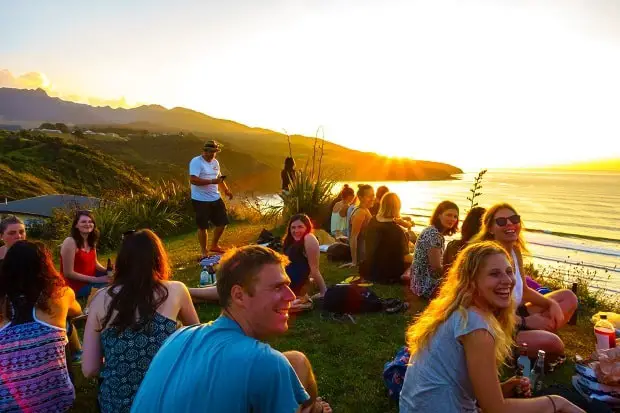
Joining travel groups literally or online will be an enriching experience for you as a writer as you will be exposed to other unique perspectives.
6. Register on freelance websites and subscribe to industry newsletters
The best part about most freelance websites is that you can sign up and look for work without spending a dime. Freelance-friendly platforms such as Upwork , Fiverr , Freelancer , and even LinkedIn can help you win your first client. Various sites offer jobs to freelance travel writers as well. You could consider BootsnAll , British Columbia Magazine , and GoNomad . Subscribing to travel industry newsletters will keep you updated about current market trends.
7. Take up a travel writing course
There are several travel writing courses available online that you must take to perfect your craft. Some of them are available for free while a few paid courses offer you some certification. The latter can add brownie points to your portfolio, so choose wisely. You could consider taking a course from the Travel Writers Academy. Courses offered by local community colleges can also be good options.

8. Decide your travel writing rates
As a beginner, you may have to start small. This means you may accept low-paying clients just to get into the game. Here’s some advice: If an assignment doesn’t pay substantially, accept only if the brand is reputable. Working with well-known clients can add value to your portfolio. Deciding your rate may not be easy, but there’s one thing you should never do: Don’t undersell yourself. The minimum acceptable rate should be at least 20 cents per word if you are writing for independent websites and blogs. For newspapers, make it 25 cents per word, 30 cents if it’s for a magazine. For specialized content writing, charge at least 40 cents per word.
9. Ensure your proposals are top-notch and your pitch is impeccable
Writing engaging proposals is the most important aspect of winning clients, especially if you’re a beginner. Start with an interesting and catchy subject line and then introduce yourself briefly. Next, describe your story idea with a brilliant hook line. Dive into the story outline next and see if you can also submit relevant images. Next, explain why they should select you to write the story. Tell them why you’re different and how you can add value. Mention any relevant project(s) and provide your portfolio link to them. Refrain from DMing the editors or clients. Also, do not follow up with them more than twice. You don’t want them to have the impression that you are desperate and annoying.
10. Think from the perspective of the reader
Rather than writing solely from your perspective, also consider your readers’ points of view. Understand your audience. What would they like to know about the piece you’re about to write? Are you answering their questions to satisfy their curiosity? Ensure your focus is on enhancing the reader’s trip experience.
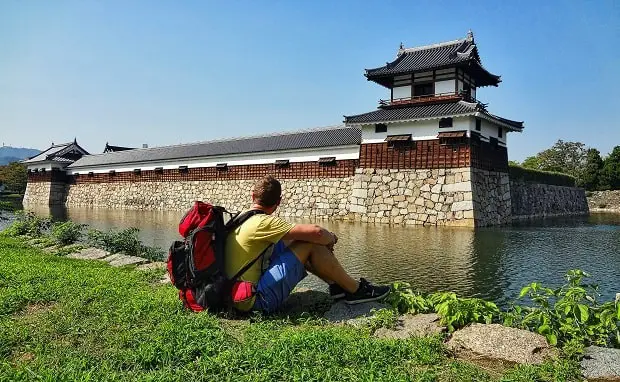
When you are writing about a certain place, you have to soak up as much as you can about that site’s history and its significance to our time.
The final piece of advice:
Visit different places and write a lot, and I mean a lot! Also, became an avid reader of books by famous travel writers like Colin Thubron, Paul Theroux, and Sara Wheeler. Becoming a freelance travel writer is a promising career option. No doubt about it. So, what are you waiting for? Get started now. Next up, you may want to explore a list of the top travel book publishing companies .

Digital marketing course: Join my full AI Marketing course, with over 6h and 30 minutes of video lessons and 5 bonuses and learn the skills necessary to thrive as a marketer in the digital era.

Rafal Reyzer
Hey there, welcome to my blog! I'm a full-time entrepreneur building two companies, a digital marketer, and a content creator with 10+ years of experience. I started RafalReyzer.com to provide you with great tools and strategies you can use to become a proficient digital marketer and achieve freedom through online creativity. My site is a one-stop shop for digital marketers, and content enthusiasts who want to be independent, earn more money, and create beautiful things. Explore my journey here , and don't miss out on my AI Marketing Mastery online course.
Explore Jobs
- Jobs Near Me
- Remote Jobs
- Full Time Jobs
- Part Time Jobs
- Entry Level Jobs
- Work From Home Jobs
Find Specific Jobs
- $15 Per Hour Jobs
- $20 Per Hour Jobs
- Hiring Immediately Jobs
- High School Jobs
- H1b Visa Jobs
Explore Careers
- Business And Financial
- Architecture And Engineering
- Computer And Mathematical
Explore Professions
- What They Do
- Certifications
- Demographics
Best Companies
- Health Care
- Fortune 500
Explore Companies
- CEO And Executies
- Resume Builder
- Career Advice
- Explore Majors
- Questions And Answers
- Interview Questions
Travel Writer Education Requirements
There are several educational requirements to become a travel writer. Travel writers usually study journalism, english, or communication. 76% of travel writers hold a bachelor's degree, and 15% hold an master's degree. We analyzed 368 real travel writer resumes to see exactly what travel writer education sections show.
The most common colleges for travel writers are the New York University and the New York University.
There are also many online travel writer courses to help get the education required to be a travel writer.
What education do you need to become a travel writer?
What degree do you need to be a travel writer.
The most common degree for travel writers is bachelor's degree, with 76% of travel writers earning that degree. The second and third most common degree levels are master's degree degree at 15% and master's degree degree at 6%.
- Bachelor's , 76%
- Master's , 15%
- Associate , 6%
- Doctorate , 1%
- Other Degrees , 2%
What should I major in to become a travel writer?
You should major in journalism to become a travel writer. 18% of travel writers major in journalism. Other common majors for a travel writer include english and communication.
- Journalism , 18%
- English , 17%
- Communication , 10%
- History , 7%
- Other Majors , 48%
Most common colleges for travel writers
Travel writers often get their degrees at New York University, Pennsylvania State University, and University of Florida. Here are the most common colleges for travel writers in the US based on their resumes.
Best majors for travel writers
Best colleges for travel writers.
The best colleges for travel writers are Northwestern University, Harvard University, and Massachusetts Institute of Technology.
A travel writer with advanced education typically earns a higher salary and has access to better jobs. That's why Zippia looked into the best colleges for travel writers. We based this list on several metrics: admissions rate, retention rate, mean earnings of graduates, the ratio of working vs. non-working students ten years after admission, the average cost of attendance, and median debt for graduates who become travel writers.

1. Massachusetts Institute of Technology
Cambridge, MA • Private
In-State Tuition

2. Harvard University

3. Northwestern University
Evanston, IL • Private

4. Columbia University in the City of New York
New York, NY • Private


5. University of California, Berkeley
Berkeley, CA • Private

6. University of North Carolina at Chapel Hill
Chapel Hill, NC • Private

7. California Polytechnic State University-San Luis Obispo
San Luis Obispo, CA • Private

8. University of Southern California
Los Angeles, CA • Private

9. Emory University
Atlanta, GA • Private

10. University of Texas at Austin
Austin, TX • Private
20 best online courses for travel writers
1. International Travel Preparation, Safety, & Wellness
Whether you've traveled before or not, living and working overseas can be challenging. Learn how best to prepare and make the most of your time internationally. This course will prepare you to work and live overseas. It explores the epidemiology of common morbidity and mortality among travelers and examines key prevention, safety, and travel medicine principles and services to contextualize risks and maintain wellness. The course reviews applicable interventions, appropriate vaccines, and...
2. TRAVEL Hacking for Beginners: Cheap, Smart & Safe Travel
60+ World Travel Tips: Cheap Travel. Fear of Flying. Travel Motivation & Safety. Negotiation. Social Success Abroad...
3. Travel Writing: Explore the World & Publish Your Stories!
Highest Rated Travel Writing Course ~ Ranked #4 on Buzzfeeds List of 23 of the Coolest Online Classes on this website...
4. Travel Management Course (Skill-Based)
#1 Travel Management Course in the Industry .All you need to know to step into the Travel & Tourism Sector...
5. How to get Paid to Travel The World
Build an online brand from scratch and get paid to travel the world Full Time...
6. Executive Travel Planning for Virtual Assistants
Manage flights, hotels, and car services for corporate travel like a pro! PLUS travel changes during a global crisis...
7. Travel Photography: Take Beautiful Photos on Your Adventures
Capture amazing photos with our complete A-Z guide to travel photography: Equipment, Shooting, Editing, Sharing...
8. Travel Journaling: How to Write Extraordinary Travel Diaries
From the author of Globejotting: How to Write Extraordinary Travel Journals (and still have time to enjoy your trip!)...
9. DIGITAL NOMAD MASTERY - How to Travel The World for Free
How You Can Explore the World in Luxury or On a Shoestring as a Digital Nomad...
10. Travel Hacking and Credit Card Reward Basics!
Credit cards offer HUGE sign up bonuses!...
11. Start Your Traveling Ministry - Itinerant and Evangelistic
Ministry Training Institute. How do you get started with a traveling ministry?...
12. Travel! The Ultimate Crash Course to Living on the Road
How You Can Afford a Life of Travel and Adventure!...
13. Learn Most Common Thai For Travelling. In Just 40 Minutes!
Learn Practical Thai in Just 40 minutes!...
14. How To Work For Yourself And Travel The World
How to find your focus, determine the value you can offer the world, and focus on creating the life you want...
15. Become a Freelance Content Writer - Get Paid to Write Online
Learn everything you need to know about becoming a freelance writer - Work from home!...
16. 3-Step Writing System: Blogging & Writing Secrets
Blogging & writing tips for beginners to pros. Become an expert blogger/freelance writer. Ultimate blog writing course!...
17. Fashion Blogging: Starting a Fashion Blog
Fashion blogging made simple - wordpress, photography, blog name, brand collaborations...
18. The Complete Freelance Writing Online Course:Beginner to Pro
Learn How to Get Paid to Write Online, Make Money, and Work From Anywhere...
19. Copywriting: Persuasive Writing Ft. Two Forbes Writers
Forbes Contributors Renee Sylvestre-Williams & Matthew Rolnick offer a Comprehensive Guide to Persuasive Copywriting...
20. Humor Writing: How to Think, Write, Speak, and Be Funnier!
Great for Writing & Public Speaking: Learn the Techniques Professional Humorists Use to Create Consistently Funny Comedy...
Top 10 most affordable universities for travel writers
The most affordable schools for travel writers are Baruch College of the City University of New York, university of florida, and california state university - long beach.
If the best universities for travel writers are out of your price range, check out these affordable schools. After factoring in in-state tuition and fees, the average cost of attendance, admissions rate, average net price, and mean earnings after six years, we found that these are the most affordable schools for travel writers.

1. Baruch College of the City University of New York
Cost of Attendance

2. University of Florida
Gainesville, FL • Private

3. California State University - Long Beach
Long Beach, CA • Private

4. Brooklyn College of the City University of New York
Brooklyn, NY • Private

5. Brigham Young University
Provo, UT • Private

6. California State University - Los Angeles

7. Hunter College of the City University of New York

8. University of South Florida
Tampa, FL • Private
9. University of North Carolina at Chapel Hill

10. California State University - Northridge
Northridge, CA • Private
Top 10 hardest universities to get into for travel writers
The hardest universities for travel writers to get into are Northwestern University, Harvard University, and Massachusetts Institute of Technology.
Some great schools for travel writers are hard to get into, but they also set your career up for greater success. The list below shows the most challenging universities to get into for travel writers based on an institution's admissions rates, average SAT scores accepted, median ACT scores accepted, and mean earnings of students six years after admission.
1. Northwestern University
Admissions Rate
SAT Average
3. Massachusetts Institute of Technology

5. Northeastern University
Boston, MA • Private

6. Boston University
7. emory university.

8. New York University
9. university of southern california, 10. university of california, berkeley, top 10 easy-to-apply-to universities for travel writers.
The easiest schools for travel writers to get into are Notre Dame de Namur University, mount saint mary's university, and rochester university.
Some schools are much easier to get into. If you want to start your career as a travel writer without much hassle, check out the list of schools where you will be accepted in no time. We compiled admissions rates, average SAT scores, average ACT scores, and average salary of students six years after graduation to uncover which were the easiest schools to get into for travel writers.

1. Notre Dame de Namur University
Belmont, CA • Private

2. Mount Saint Mary's University
3. rochester university.
Rochester Hills, MI • Private

4. Centenary University
Hackettstown, NJ • Private

5. La Roche College
Pittsburgh, PA • Private

6. University of the Incarnate Word
San Antonio, TX • Private

7. Saint Joseph's College of Maine
Standish, ME • Private

8. Kean University
Union, NJ • Private

9. San Francisco State University
San Francisco, CA • Private

10. Holy Names University
Oakland, CA • Private
Average travel writer salary by education level
Travel writers with a Doctorate degree earn more than those without, at $64,094 annually. With a Master's degree, travel writers earn a median annual income of $60,470 compared to $60,334 for travel writers with an Bachelor's degree.
Travel Writer Education FAQs
What is the best college for travel writers, search for travel writer jobs.
Updated March 14, 2024
Editorial Staff
The Zippia Research Team has spent countless hours reviewing resumes, job postings, and government data to determine what goes into getting a job in each phase of life. Professional writers and data scientists comprise the Zippia Research Team.
- Author/Writer Education Requirements
- Blogger Education Requirements
- Blogger, Founder Education Requirements
- Content Writer Education Requirements
- Contributing Author Education Requirements
- Fiction Writer Education Requirements
- Film Writer Education Requirements
- Freelance Blogger Education Requirements
- Freelance Journalist Education Requirements
- Poet Education Requirements
- Staff Writer Education Requirements
- Story Writer Education Requirements
- Writer Education Requirements
- Writer And Editor Education Requirements
- Writer/Blogger Education Requirements
- Author/Writer
- Blogger, Founder
- Comic Book Writer
- Content Writer
- Contributing Author
- Fiction Writer
- Film Writer
- Freelance Blogger
- Freelance Journalist
- Staff Writer
- Story Writer
- What an Author/Writer Does
- What a Content Writer Does
- What a Staff Writer Does
- What a Writer Does
- What a Writer And Editor Does
- Zippia Careers
- Arts, Entertainment, Sports, and Media Industry
- Travel Writer
- Travel Writer Education
Browse arts, entertainment, sports, and media jobs
16 travel writing jobs for beginners

When you hear the words “travel writing,” what comes to mind? Most people imagine staying at a luxurious hotel at the beach, dipping their toes in the water and sipping lemonade as they compose a few blog posts on their laptop from around the world. And while some travel writing jobs come with pre-paid travel and beautiful surroundings, there are plenty of other opportunities, even if you’re a beginning freelance writer.
What is travel writing?
Travel writers are people who get paid to write about travel. Any type of writing that touches on this topic can be considered travel writing. It’s a broad niche, so there are many different opportunities for you to try.
Here are a few things travel writers help to create:
- Travel itineraries for popular destinations
- Packing guides
- Reviews about hotels, destinations, and popular restaurants
- Travel advice
- Social media content
- Travel books
With so many options, travel writers can niche down and specialize in one or two areas, or stay generalists and work on whatever assignments they’re able to land.
How much money does a travel writer make?
While the Bureau of Labor Statistics (BLS) doesn’t collect data specifically for travel writers, it does include information for writers and authors .
The median annual salary in 2019 was $63,200.
The type of travel writing job you select, the size of the company you work for, and your experience all play a part in determining how much money you can make. When you’re just getting started as a writer , you probably won’t earn as much as experienced travel writers. In fact, you might keep your day job while you write a few articles on the side. Then, as you gain experience and improve your portfolio, you can eventually say goodbye to your full-time job.
How do you get paid to travel and write?
Payment as a travel writer isn’t always in the form of cash. Sometimes, a company comps your travel expenses, food, and lodging. These are benefits you can negotiate with each client. Typically, the more experience you have and the larger your influence on social media, the more likely you are to get compensated for travel jobs.
Always find out the details of payment for travel writing jobs before agreeing to the work.
Is travel writing a good career?

If you enjoy both traveling and writing, travel writing can be an excellent career choice. Your work may not even feel like work.
However, finding travel writing jobs won’t always be easy.
According to BLS , the writing industry is expected to have -2% growth over the next ten years.
This means you’ll experience more competition as you try to break into the travel industry as a writer.
Also, it’s important to remember that you’ll likely be running your own business as a travel writer instead of working as an employee. That means you’re responsible for paying your self-employment taxes , invoicing your clients , and making sure your business is legal . Being your own boss comes with a lot of responsibilities, but it can be a fulfilling experience.
Do you need a degree to be a travel writer?
While some travel writers have a degree in journalism or English, it’s not mandatory for many travel writing jobs. Most clients care more about your ability to create great content than your education and background.
However, here are six essential skills all travel writers should have.
- Excellent writing skills. You want to engage people with the content you create. It needs to be well written and understandable. If you hate writing or struggle to put words together in a grammatically correct way, you’ll have a hard time in this position.
- A passion for travel. If you’re a creature of comfort and a homebody, frequent travel to strange lands might be enough to suck the passion out of your writing. But if you love travel and writing, your enthusiasm can shine through and captivate your audience.
- Broad knowledge of the travel industry. When you’re up to date with current trends, you can create authoritative content on that topic.
- SEO knowledge. You want people to actually find the content you create, so you must use SEO best practices to make that happen.
- Ability to research. You may need to create content about a travel topic that’s not your specialty. If you do, your ability to research and find accurate information online is vital. Research is also crucial if you’re going on a trip and writing about it. You’ll need to know where to go and what to share.
- Organization skills. Deadlines are essential when you’re a writer. You need to keep track of your due dates and ensure you complete everything on time.
In addition to those basic skills, each hiring company has its own set of requirements. For instance, some may want you to include photos of your travel, so you’ll need to take great pictures.
Always read requirements for travel jobs carefully. You don't end up with anything unexpected in your workload.
68% of travel writers hold a Bachelor's degree. - Zippia
Here are some of the best types of travel writing jobs for those starting out:
- Travel magazine article writer. There are loads of periodicals dedicated to travel. Many of them pay you to create content for them. You may even land a recurring writing gig if editors like your work enough.
- Travel-themed social media content writer . Many travel companies market themselves on social media. You can find a job creating these posts.
- Travel guide writer. Before someone takes a trip, they want to know what to expect. You can write the guidebook they need to have a blast on their journey.
- Travel copywriter . If you know how to use your words to persuade people to take action, you can craft website copy, advertisements, brochures, and more in this position.
- Travel blogger. You can start your own travel blog or write for existing ones. If you create your own, you may even get sponsors someday.
- Travel eBook ghostwriter. As a ghostwriter, you’ll create content without getting a byline. Since you won’t be getting credit, you can often charge more for your work.
- Destination travel writer. You can create content about specific destinations. In travel writing jobs like this, you’ll help readers learn more about each place’s culture, food, and climate.
- Travel list article writer. List articles round up the top options in one easy-to-digest article. You can write about the top 10 road trips from Philadelphia, the best seven steak joints in the west, or about any number of travel-related topics.
- Personal essay travel writer. People enjoy reading real travel stories. They can glean nuggets of wisdom from what you’ve experienced on your own travels.
- Travel journalist. Journalists share the facts, not their opinions. You’ll have to do your research to succeed in these travel jobs. You can write documentaries, articles, books, and more as a travel journalist.
- Press release writer. Hotels and destinations put out press releases when they open or make changes. You can help them market by crafting an informational piece for the press.
- Video scriptwriter. YouTubers often use scripts to plan their video content. Some pay writers to craft these scripts for them.
- Show notes writer. Are there any travel-themed podcasts you enjoy listening to? Each episode typically includes show notes, which sums up the content for people to scan. Someone has to produce those notes, and some companies hire writers to tackle this task.
- Travel foodie writer. The best food can help make the best memories. If you’ve got a passion for travel and food, you can create restaurant reviews, dining tips, chef profiles, and more.
- Local travel expert. What is unique about where you live? Create great content that shares the inside scoop with visitors. You can find travel writing jobs with regional magazines, local newspapers, and online publications.
- Airline magazine writer. While many airlines have currently stopped publishing magazines due to the pandemic, these opportunities may see a comeback in the years ahead. If airlines resume publication, you can create content about travel and other lifestyle topics of interest to travelers.
How do you become a travel writer?
Now that you know more about travel writing, are you ready to become a travel writer? Here are five different strategies for finding paid work in this field.
1. Search job boards for travel jobs
If you’re looking for work, plan on regularly checking a couple of job boards and using filters to search for travel jobs. Indeed and ZipRecruiter are popular options. Companies from all different niches post job opportunities on these, so you’ll need to use the search or filter feature.
2. Cold pitch travel companies
You can send cold pitches to companies and ask them if they need any freelancers to create content. If you give this route a try, make sure you research each company before sending your pitch. You want to customize your email for each one so that it’s personalized. Otherwise, you’ll sound spammy and likely won’t get any responses.
3. Start your own travel website
Though this path takes longer to generate income, starting your own blog can be an excellent long-term strategy. Decide what type of travel writing you want to include on your blog, and start generating content.
You’ll have more success if you niche down even further. Will your blog be the go-to resource for large family travel? Or will you focus on minimalist travel? Do you prefer a more general lifestyle website, touching on travel and other areas of life? There’s no wrong answer, as you can always pivot later.
Once you know what you’re going to write about, start creating content. As your traffic grows through your content marketing strategy, you can begin the monetization process.
A bonus of creating your own blog is that you’ll be writing your own samples as you go. If you plan on writing for others, you’ll need a portfolio with quality pieces to demonstrate your skills.
4. Turn to social media
You can use social media for marketing your new business and finding new clients. Make sure you’re following other travel writers on the platforms where you’re active. You can glean tips and tricks from them as you continue to grow your business.
You can also connect with companies that post journalist opportunities. For instance, if you’re on Twitter, check out feeds from @Mediabistro , @FreelanceWJ , and @jjobs_tweets . These three post various writing jobs, and you can use their content to check for travel writing work.
Hashtag searches can also help you find gigs on social media. Search for #travelwriters, #writersneeded, and #editorchat to see if anyone needs help.
On social media, you’ll have to wade through a lot of noise to find positions. If you’re easily distracted, setting a time limit or giving yourself boundaries to stay productive can keep you focused.
Never too late to start: More than 50% of travel writers are over 50 years old. - Zippia
5. Pitch publications that accept posts
Another way to score paid travel jobs is to send a pitch to lifestyle or travel publications that frequently hire freelance writers. Further below, there’s a list of 35 different companies you can pitch. Most of them are a great fit even if you’re a beginner.
If you get a byline with your post, you can use these articles as samples to build your portfolio. Having a strong portfolio is essential when landing future work, so make sure to submit quality pieces for each site.
To help increase your chances of getting accepted, here are four tips for pitching to travel publications:
- Study the site before you pitch. You want your content to match their reader’s expectations. Otherwise, you may send a pitch with some personal travel stories when they really want travel guides. Let their existing content be your guide, and see what’s missing from their site. That’s what you want to provide, instead of rehashing the same topic for the third time.
- Follow the directions. Every site has its pitching requirements. Read them carefully and follow them precisely. If you’re looking to guest post to grow your portfolio and gain credibility as a beginner, note any guest-posting policies listed. Many questions about the process will be here, which make the pitching process easier for you.
- Personalize your pitch. If you’re sending an email, take time to find out who you should address it to. Do some research on the site to find the owner or editor’s name. As you write your pitch, make it clear that you’ve spent time studying the publication’s content and know that you can create a piece that resonates with its audience.
- Keep your pitch short. Editor teams get a lot of emails. Do them a favor, and don’t write a novel. Include the information they ask for, and tell them a little bit about yourself and your travel experiences. But don’t write your entire life story.
35 travel publications that hire freelance writers

If you’re ready to get your business off the ground and pitch some travel publications, here are some you can start with. You’ll find a variety of travel websites and printed travel magazines that accept freelance writers and offer paid travel jobs, even if you’re a beginner. All published rates are in USD.
Travel websites and magazines

Can you create an honest, well-written and detailed travel piece or destination guide? Will your content guide a future traveler? If yes, you’ll want to query GoNOMAD . If your work is published, you’ll get $25.
The editors have plenty of tips for freelance travel writers in the writer’s guidelines, so take the time to read them carefully. Please note that photos are required, so make sure you have some quality images ready to share as well.
2. Outpost Magazine
This Canadian travel publication features long-form travel journalism and beautiful photographs from around the world. This company has both an online and a print publication, and it accepts freelance articles for both.
If you’re hoping to get published with Outpost online, you’ll want to keep your piece between 800-1,500 words. Longer articles, from 2,000 to 5,000 words, are accepted for the print magazine. You’ll need to work out payment terms with the editor during the pitching process.
3. Pathfinders Travel Magazine
A travel magazine for people of color, Pathfinders provides readers with lively, well-written stories about where to go and what to do. It also accepts articles for their Chef’s Table and Wine Column sections. While payment depends on the article type, most pay $150.
If you’re a freelance writer who hasn’t worked with this magazine before, its editors want you to pitch with a completed article instead of a query.
4. World Nomads
Do you have a life-changing travel experience to share with the world? If you do, World Nomads wants to know about it. In addition to written content, World Nomads also accepts photo essays and video content. For written stories of 600 to 800 words, it pays $0.50 per word. You can see on its website other payment details and which categories are currently accepting pitches.
5. My Itchy Travel Feet
If you can create content geared for travel-loving baby boomers, you’ll want to pitch My Itchy Travel Feet. Posts must be at least 700 words, be original, and come with high-quality photos. The week of publication, you’ll receive $30.
6. Hit the Road
You can earn $50 and a link to your website if you get published on Hit the Road . It publishes content about road journeys in Australia, New Zealand, the United States, and Canada.
7. Travel and Leisure
While this publication doesn’t have specific writer’s guidelines on its site or information about pay, the editors do accept pitches from freelance travel writers. Some writers report that this magazine pays well. This means you’ll want to wow the editors with your pitch, so make sure it isn’t something that’s already covered in previous editions. You can find the email address to submit your pitch on Travel and Leisure’s “Contact Us” page.
Wander accepts original articles from commercial brands and freelance writers about wellness and travel. While submissions to their website are unpaid, this company also has a print magazine. As part of your query for that publication, you share your desired rate with the editor.
9. Hidden Compass
The editors at Hidden Compass aren’t driven by travel destinations. Rather, its readers want to hear your stories and how your experiences connect travel to a broader conversation. If your article is accepted, you’ll receive a flat-rate plus 50% of crowdfunding proceeds.
10. Road & Travel Magazine
Submit travel articles about hotels, spas, travel destination reviews, and other travel topics to Road & Travel Magazine . This publication has a slant towards women, so make sure your post appeals to this target audience. The required length ranges from 200-300 words for blog posts to 1,000-1,200 words for feature articles. You’ll work out payment details with the editor.
11. Verge Publications
If you travel with a purpose, you might be a great fit for Verge magazine , a digital publication. Its readers are socially aware and want to make a difference. Submissions about volunteering, working, or studying abroad are welcome. Verge editors will notify you of payment details if they accept your piece for publication.
12. Transitions Abroad
The detailed writer’s guidelines on the Transitions Abroad website can help improve your chances of getting published. It looks for pieces about cultural immersion travel, living abroad, slow travel, country guides, and more. This company pays between $75-150 for an accepted article.
13. Go World Travel
Help the readers of Go World Travel experience a destination through your words. Articles should be in the 850-1,600 word range and include an “If You Go” section at the bottom. Accepted posts are worth $30 to 40.
14. GoMad Nomad Travel Mag
You can pitch GoMad Nomad Travel Mag with article ideas about travel advice, travel destinations, and travel stories. It accepts unpaid guest posts from travel bloggers in exchange for a link. You can also opt to receive a $25 payment instead.
15.Loaded Landscapes
If your passions include travel, photography, and writing, you’ll want to submit a pitch to Loaded Landscapes . It accepts travel articles and written content related to landscape, nature, and travel photography. Payment terms are negotiated with the editor but are in the $20 to $150 range.
16.Backpacker
Do you prefer traveling on foot? Backpacker accepts freelance writer contributions related to human-powered travel such as hiking, canoeing, and kayaking. If the company is interested in your pitch, you’ll work out payment details with the editor.
Lifestyle websites and magazines that accept travel content

17. The Penny Hoarder
Can you stretch your pennies during travel? If you have tips and tricks for traveling on a budget, The Penny Hoarder wants to hear about them. Your article must be evergreen and at least 700 to 900 words. You’ll work out payment details with the editor.
18. Listverse
While Listverse isn’t strictly a travel website, it does accept list posts about the travel industry. If the editors select your post for publication, you’ll earn $100.
19. Outdoor NW
This magazine regularly publishes adventure travel and outdoor recreation stories. You can query the editor of Outdoor NW with your article ideas related to these topics. Payment ranges from $35 for an inside photo to $125 for a feature article.
20. AARP The Magazine
Do you have tips to help AARP’s readers know how and where to travel? If you do, send your story as an email to the editors at AARP The Magazine . While it’s not an exclusive travel magazine, this lifestyle publication does include articles in the travel niche. Some writers report AARP pays $1 per word for online publications and $2 per word for print.
RV lifestyle websites and magazines

21. Escapees Magazine
What tips and advice can you offer to make the RVing lifestyle easier? If you’ve got something unique, pitch it to Escapees Magazine . Though the magazine prioritizes member content, it does accept submissions from non-members. Escapee Magazine pays $100 to $200 for feature submissions and $50 to $100 for short fillers.
22.Trailer Life Magazine
Topics about the RV lifestyle are welcomed in Trailer Life Magazine . Payment ranges from $100 to $700 for published posts, depending on the category. This travel publication also pays for photos, so consider submitting them if you have some great RV shots.
23. ROVA: The Magazine for Epic Road Trips
Are you an RV travel expert? Share your North American road-tripping travel stories with ROVA as an article or photo essay. If your piece is accepted, you get a flat rate of $200, plus a byline in ROVA magazine.
Local publications with travel sections
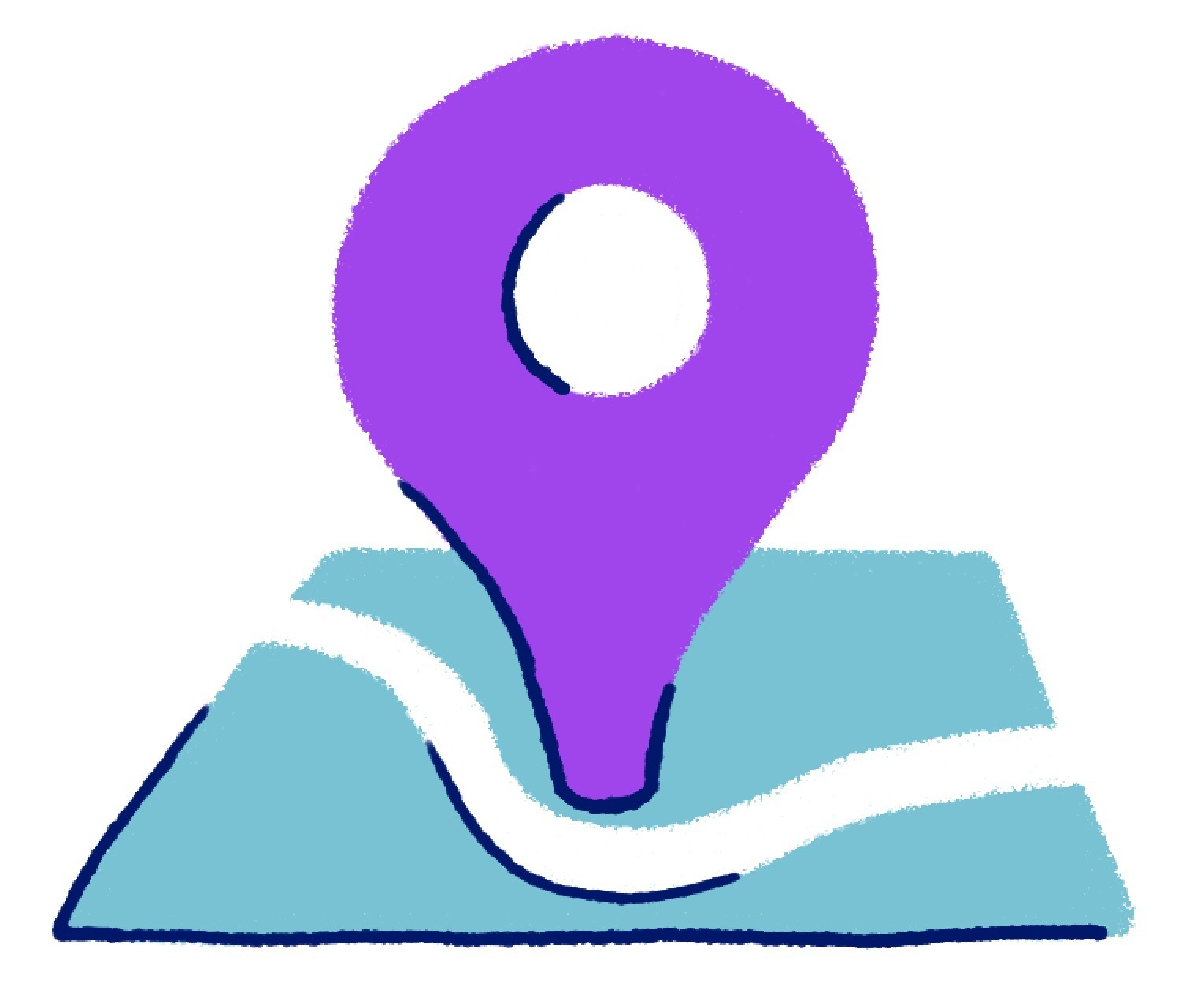
24. Arizona Highways
This publication encourages travel to and from the great state of Arizona. It accepts queries once a year, so if you’ve missed it for this year, put it on your to-do list for the next opening. Pay rates for articles accepted by Arizona Highways vary.
25. Canadian Geographic
Twice a year, this magazine publishes a Canadian Geographic Travel section. If you’ve got a great idea about travel in Canada, you’ll want to submit it to its editors. The magazine only purchases a few articles for each issue, so you’ll need to have patience with this publication.
26. Kansas! Magazine
Can you use your words and photos to promote Kansas tourism? Kansas! Magazine articles emphasize travel in this midwest state. You can work out the payment terms with the editor during the query process.
27. Seattle magazine
If you know your way around the Pacific Northwest, Seattle magazine wants to hear from you. Its writer guidelines are full of information to improve your chances of publication, so make sure you read them in full. You’ll need to wait quite a while for payment after publication, so be aware of that if you’re looking for a travel writing job that pays quickly.
28. Time Out New York
While this magazine isn’t one you can send a pitch to, it occasionally hires employees to create content about New York. If you can create articles that encourage people to explore this city and the surrounding areas, you might be a great fit. You can find more details on the Time Out New York’s career page .
"The real voyage of discovery consists not in seeking new landscapes, but in having new eyes." - Marcel Proust
Other paying travel writing publications to consider
Once you have a little experience as a freelance writer, you can try pitching for some of these travel writing jobs as well:
- Lonely Planet
- National Geographic
- Global Grasshopper
- Great Escape Publishing
- Dotdash (look in the freelance category for travel openings)
Grow your freelance travel writing business
Being published on popular travel websites can help you grow your business as a travel writer. You can also get your name out there by guest posting on the sites below. Though these articles aren’t paid, landing bylines in reputable digital and print publications are great for your portfolio when starting out.
- Journey Women
- The Foodellers
- The Art of Travel
- Practical Wanderlust
- The Roads You Travel
Final tips for growing your writing business
Now that you have a list of publications you can submit content to, here are five final tips to help you succeed as a freelance travel writer and as you search for travel jobs.
- Read the directions. We’ve said it before, and we’ll say it again in case you missed it the first time: read the instructions of the publication you’re pitching to. You’d be surprised how many emails editors toss in the trash because the freelance writer didn’t follow directions. Always take the time to read writer guidelines and make sure your pitch is a good fit before you send it in.
- Remember to invoice. If you’re getting paid for an article, most companies want you to send them an invoice . No invoice means no payment, so don’t forget this step.
- Improve your photography skills. While not every site requires you to send in photos, many do. Learn how to take great pictures so that you can send a complete package to publications.
- Continue pitching. Your content won’t be a great fit for every publication. If you get told no, don’t take it personally. Instead, send more pitches. You’ll only fail to get a yes if you give up.
- Keep track of your expenses. As a travel writer, you might be able to write off some of your travel expenses. However, you need to keep track of these in a professional way that’s easy to figure out when tax season rolls around.
Get paid to write about travel
With so many freelance writing jobs available, there’s no reason you can’t launch a career as a travel writer. So pick a publication that interests you, and get started today.
You might also enjoy this content


Travel Writing
Learn how to profit from your experiences in exotic lands by learning how to write and sell travel articles and books. This course will teach you how to develop the skills of a travel writer so you can translate sensory experiences into publishable writing.
Requirements
In this course you will learn how to develop the skills of a travel writer. You will learn how to translate what is seen, heard, tasted, touched, smelled and felt (intuitively and physically) into publishable articles and books. You will understand the writing styles and methods needed to sell material in today's competitive market. You will learn about popular styles and types of travel writing that are the friendliest to new writers. Other topics of the workshop include; how to write query letters, how to produce articles, essays and books, trends in types of articles and books, grammar and writing skills refreshers, and marketing information.
By the end of the course, you will have the ability to write for the travel market. So pack your sense of adventure, organize your determination and put your keyboard in a comfortable position. If you have a desire to write and yearn to travel, you are a perfect candidate to become a travel writer.
Enrollment Options:
Lesson 1 - overview of the travel market, lesson 2 - keeping a travel writer's journal, lesson 3 - writing travel articles, lesson 4 - writing travel books, lesson 5 - making plans for travel, lesson 6 - writing techniques, lesson 7 - outline methods that work every time, lesson 8 - working like a travel writer, lesson 9 - submitting like a pro, lesson 10 - research and online techniques, lesson 11 - photos and travel writing, lesson 12 - recycling your material.
Prerequisites:
There are no prerequisites to take this course.
Requirements:
Hardware Requirements:
- This course can be taken on either a PC, Mac, or Chromebook.
Software Requirements:
- PC: Windows 8 or later.
- Mac: macOS 10.6 or later.
- Browser: The latest version of Google Chrome or Mozilla Firefox are preferred. Microsoft Edge and Safari are also compatible.
- Adobe Acrobat Reader .
- Software must be installed and fully operational before the course begins.
- Email capabilities and access to a personal email account.
Instructional Material Requirements:
The instructional materials required for this course are included in enrollment and will be available online.
Eva Shaw, Ph.D., is a full-time working writer. She has authored thousands of articles, essays, short stories, and more than 70 books, including "Writing the Nonfiction Book," "Insider's Guide to San Diego," and her latest release, "The Pursuer." Her work has been featured in USA Today, San Diego Union Tribune, Publisher's Weekly, and others. She has won several awards, including the Book of the Year Award from the American Journal of Nursing, the Benjamin Franklin Award, and the Woman of Merit Award.
Instructor Interaction : The instructor looks forward to interacting with learners in the online moderated discussion area to share their expertise and answer any questions you may have on the course content.
Related Courses
Travel Writing and its Re-Imagining Within History and Creative Ethnography
- First Online: 31 March 2024
Cite this chapter
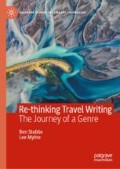
- Ben Stubbs 6
Part of the book series: Palgrave Studies in Literary Journalism ((PSLJ))
This chapter examines how travel writing has been influential in the past re-thinking of the ethnography and history disciplines. Through a more open and creative approach recognising the style of practitioners such as Michael Jackson and Stephen Muecke within ethnography, and post post-modern theory, the ‘from below’ perspective and the acknowledgement of narrative and multiple voices in history writing, this chapter demonstrates the cross disciplinary usefulness of travel writing when these other areas have faced their own periods of uncertainty. This provides further material to reflect on as travel writing recalibrates in the post-COVID era.
This is a preview of subscription content, log in via an institution to check access.
Access this chapter
Institutional subscriptions
Bibliography
Ankersmit, Frank, Domanska, Ewa, Kellner, Hans (eds). Re-figuring Hayden White. Stanford: Stanford University Press, 2009.
Google Scholar
Ankersmit, Frank. Historical Representation, Redwood City: Stanford University Press, 2001.
Asad, T (ed). Anthropology and the Colonial Encounter , Ithaca Press, 1973.
Bennett, Andrew and Royle, Nicholas. An Introduction to Literature, Criticism and Theory. London: Routledge, 2016.
Berkhofer, Robert. Beyond the Great History: History as Text and Discourse, Cambridge: Harvard University Press, 1997.
Campbell, Mary Baine. The Witness and the Other World: Exotic European Travel Writing, 400–1600 . Ithaca: Cornell University Press, 2018. https://doi.org/10.7591/9781501721090 .
Carr, Edward Hallett. What Is History? The George MaCaulay Trevelyan Lectures Delivered in the University of Cambridge January-March 1961 / E.H. Carr. Harmondsworth, Middlesex: Penguin Books, 1964.
Carrithers, Michael. American Ethnologist 36, no. 2 (2009): 408–409. http://www.jstor.org/stable/27667573 .
Clifford, James & Marcus, George (eds). Writing Culture: The Poetics and Politics of Ethnography, Berkely: University of California Press, 1986.
Clifford, James. The Predicament of Culture, Cambridge: Harvard University Press, 1988.
Book Google Scholar
Dalrymple, W. Nine Lives , Bloomsbury, 2009.
Darnton, Robert. The Great Cat Massacre and other episodes in French Cultural History , New York: Basic Books, 1984.
Fabian, J. Time and the Other: How Anthropology makes its Object , Columbia University Press, 1983.
Ginzburg, Carlo. The Cheese and the Worms: The Cosmos of a Sixteenth- Century Miller , Baltimore: Johns Hopkins University Press, 1980.
Ingold, T. Key Debates in Anthropology , Taylor & Francis, 1996.
Jackson, Michael. Excursions, Oxford: Oxford University Press, 2007.
Jackson, Michael. Road Markings: An Anthropologist in the Antipodes, Dunedin: Rosa Mira Books, 2012.
Jackson, Michael. “Time and Space.” In The Varieties of Temporal Experience: Travels in Philosophical, Historical, and Ethnographic Time , 121–28. Columbia University Press, 2018. https://www.jstor.org/stable/10.7312/jack18600.7 .
Jenkins, Keith. Rethinking History , London: Psychology Press, 2003.
Jenkins, Keith. Refiguring History. Refiguring History: New Thoughts on an Old Discipline . Florence: Taylor and Francis, 2005. https://doi.org/10.4324/9780203987155 .
Kremmer, C. Carpet Wars: Ten Years in Afghanistan , Pakistan and Iraq, Flamingo, 2002.
Leiris, M. Phantom Africa (trans Brent Hayes Edwards): Seagull Books, 2017 [1934].
Marshall, A. The Trouser People: Burma in the shadows of Empire , Counterpoint, 2002.
McKernan, Michael. The Historian’s Boots, ANU History department lecture series 11th October, 2012.
Muecke Stephen, Roe Paddy, and Benterrak Krim. Reading Country: An Introduction to Nomadology . Fremantle: Fremantle Arts Centre Press, 1984.
Muecke, Stephen, Max Pam, and Alfredo Cramerotti. Contingency in Madagascar . Bristol: Intellect Books Ltd, 2012.
Muecke, Stephen. “Gulaga Story.” Studies in Travel Writing 11, no. 1 (2007): 83–91. https://doi.org/10.1080/13645145.2007.9634820 .
Article Google Scholar
Pihlainen, Kalle. “Escaping the Confines of History: Keith Jenkins.” Rethinking History 17, no. 2 (2013): 235–252. https://doi.org/10.1080/13642529.2013.778126 .
Pratt, Mary Louise. Imperial Eyes: Travel and Transculturation . London: Taylor & Francis Group, 2007. https://doi.org/10.4324/9780203106358 .
Said, Edward. Orientalism: Western Concepts of the Orient, London: Routledge, 1978.
Scott, Julie. The Journal of the Royal Anthropological Institute 15, no. 4 (2009): 879–879. http://www.jstor.org/stable/40541779 .
Youngs, Tim. The Cambridge Introduction to Travel Writing . New York, NY: Cambridge University Press, 2013. https://doi.org/10.1017/CBO9780511843150 .
Download references
Author information
Authors and affiliations.
UniSA Creative, University of South Australia, Magill, SA, Australia
You can also search for this author in PubMed Google Scholar
Corresponding author
Correspondence to Ben Stubbs .
Rights and permissions
Reprints and permissions
Copyright information
© 2024 The Author(s), under exclusive license to Springer Nature Switzerland AG
About this chapter
Stubbs, B. (2024). Travel Writing and its Re-Imagining Within History and Creative Ethnography. In: Re-thinking Travel Writing. Palgrave Studies in Literary Journalism. Palgrave Macmillan, Cham. https://doi.org/10.1007/978-3-031-56188-7_7
Download citation
DOI : https://doi.org/10.1007/978-3-031-56188-7_7
Published : 31 March 2024
Publisher Name : Palgrave Macmillan, Cham
Print ISBN : 978-3-031-56187-0
Online ISBN : 978-3-031-56188-7
eBook Packages : Literature, Cultural and Media Studies Literature, Cultural and Media Studies (R0)
Share this chapter
Anyone you share the following link with will be able to read this content:
Sorry, a shareable link is not currently available for this article.
Provided by the Springer Nature SharedIt content-sharing initiative
- Publish with us
Policies and ethics
- Find a journal
- Track your research
What is a digital nomad visa and which countries offer them? Here's a breakdown plus the barriers for entry
Once something that seemed unattainable, the digital nomad lifestyle has become more mainstream thanks to the remote work boom in the wake of the COVID-19 pandemic.
Now more than 40 countries offer digital nomads remote work visas and they often last a year or longer.
Japan is the latest country to hop on the bandwagon.
And South Africa is set to open its doors to remote workers later this year.
Are you looking for adventurous travels while working from a laptop? Here are the countries that offer digital nomad visas and the requirements you'll need to meet for approval.
What is a digital nomad?
A digital nomad is someone who works remotely while travelling and living in various locations .
They rely on their laptop and internet connection to carry out their work responsibilities from anywhere in the world.
They don't have an office.
Instead, they work from their accommodation, local coffee shops and co-working hubs — basically anywhere with an internet connection.
What drove the rise in digital nomadism?
The pandemic .
University of Melbourne senior lecturer in anthropology Paul Green says it changed the narrative about remote work and made digital nomadism a possibility instead of a pipedream.
"The understanding of remote work and working from anywhere became normalised as a result of lockdowns and working-from-home mandates," Mr Green told the ABC.
"Increasing numbers of companies and organisations have also driven this lifestyle trend by embracing variations of remote employment models and practices."
Why do people become digital nomads?
Mr Green says digital nomadism offers people a pathway to a seemingly idyllic lifestyle .
"It's built around positive images of life and work in some of the world's leading tourism and beach destinations," he said.
"Many are also drawn by the promise of community, of meeting like-minded individuals in popular digital nomad hubs such as Chiang Mai or various spots in Bali.
"The lifestyle is also built on a strong imagining of what has been left behind, in the form of a monotonous and mundane rat race and office work back home."
What is a digital nomad visa?
A digital nomad visa is a permit that allows a person to work remotely in a foreign country .
The nomad's source of income usually has to be located outside the country they plan to move to.
For example, if you work for a company registered in Spain, you cannot apply for a digital nomad visa in Spain.
The visas typically have a duration of 12 months and can be extended depending on the country of issue. In some cases, a digital nomad visa can be the first step on the pathway to permanent residency.
How much does a digital nomad visa cost?
It can cost anywhere from a few hundred dollars to more than $3,000.
But this depends on which country you're going to.
A digital nomad visa for Barbados, for example, costs $US2,000 ($3,000).
Meanwhile, a similar visa for Spain costs 80 euros ($130).
Which countries offer digital nomad visas?
More than 40 countries offer digital nomad visas.
What are the visa requirements?
The requirements for a digital nomad visa vary from country to country.
Let's run through a few examples to give you an idea.
The data below comes from Numbeo , a website which crowdsources data to give an international picture of the cost of living.
Barbados Length: 12 months with an option to renew Application fee: $US2,000 Income to prove: $US50,000 Tax: Nomads will not be liable to pay Barbados income tax Cost of living: 8.5 per cent higher on average than in Australia Greece Length: 12 months with an option to renew Application fee: 75 euros Income to prove: 3,500 euros gross of tax per month Tax: You become a tax-paying resident after six months of your stay (the amount depends on your monthly income bracket) Cost of living index: 25.7 per cent lower on average than in Australia Hungary Length: 12 months with an option to renew Application fee: 110 euros Income to prove: 2,000 euros per month Tax: You become a tax-paying resident after six months of your stay (includes personal income tax and social security tax) Cost of living: 40.4 per cent lower on average than in Australia Japan Length: Maximum six months Application fee: Yet to be confirmed Income to prove: 10 million Japanese yen Tax: Australia has a double tax agreement with Japan that guarantees that individuals and businesses do not face double taxation on their earnings in both countries Cost of living index: 31.2 per cent lower on average than in Australia
What should I think about before choosing this lifestyle?
Digital nomads select their locations based on different elements that might affect their lifestyle and job prospects.
Some of the obvious factors to consider include the ones we've highlighted above (length, cost of living, proof of income/savings).
But it doesn't stop there.
Digital nomads should also think about:
- Internet coverage and speed
- Safety — cyber, economic, and social
- Transportation infrastructure
- Language barriers
- Health insurance
Mr Green says loneliness is a key concern for many nomads .
"Friendships come and go, just as a return to a favourite destination leaves individuals having to start the process again of building a social network in place.
"In some cases, loneliness or homesickness can lead to nomads returning home.
"Some nomads also have difficulties in sharing their concerns and worries with other nomads because the lifestyle is built on collective expectations and powerful media images of this dream lifestyle built around fulfilment."
If you are drawn to the digital nomad lifestyle, Mr Green says it's important to make sure you have the "skill sets, educational background or project ideas" to transition into a sustainable life as a remote worker.
Do digital nomads have to pay tax?
It depends.
Some countries expect you to pay full tax, some have tax deductions, while others impose no taxes.
The countries with zero tax assume you still pay tax in your home country.
In Greece (which offers a one-year visa), you are exempt from paying local income tax only for the first six months.
So, for the last six months of your visa, you will be required to pay tax.
What's the difference between a digital nomad visa, a tourist visa, and a work visa?
Because all three visas serve different purposes, here are the key differences:
What is the best country for remote work?
That depends on what you're looking for.
Some digital nomads might be more interested in an adventurous experience in nature, while others might want the hustle and bustle of a big city.
Some might want to be in a place where they know no-one and have to learn a new language, while others might be more inclined to move to a place where family or friends are already living.
So it all depends on your individual circumstances.
Cybersecurity company NordLayer has come up with a global remote work index which ranks countries from the most to the least attractive based on four pragmatic criteria:
- Cyber safety
- Economic safety
- Digital and physical infrastructure
- Social safety
According to that criteria, the internet company's top five countries from last year were:
- 2. The Netherlands
However, the index doesn't take into account things such as cultural experience or scenery, which might be more important to some digital nomads.
And the top-ranked countries tend to be more expensive to live in.
- X (formerly Twitter)
Related Stories
Sick of office politics japan's new digital nomad visa may be your way out.
These Australians work remotely while travelling overseas. But are they really living the dream?
- European Union
- Travel Preparation and Advice
- Travel and Tourism (Lifestyle and Leisure)
- Search Please fill out this field.
- Manage Your Subscription
- Give a Gift Subscription
- Sweepstakes
- Travel Products
I'm an American Writer in Paris, and These 13 Effortlessly French Styles Are Perfect for Spring — From $14
Elevate your suitcase with these fashionably functional picks.
:max_bytes(150000):strip_icc():format(webp)/Lane-Nieset-2000-3680d9d94a2e4d27875417f66cd2e870.jpeg)
We independently evaluate all recommended products and services. If you click on links we provide, we may receive compensation. Learn more .
Travel + Leisure / Daisy Rodriguez
On my first trip to Paris during spring study abroad more than 15 years ago, my overpacked suitcase looked similar to a scene in "Emily in Paris" — patterned tops, structured mini skirts, dresses with way too many ruffles, strappy designer sandals that could barely make it two blocks on the Champs-Élysées. A trip to COS in Le Marais — the land of light cotton summer dresses and Bohemian-style blouses — quickly solved my French fashion faux pas . In their place were boyfriend blazers, high-waisted trousers, and boxy tees that add functionality in addition to style.
Masters of layering, Parisians know the value of basics — especially when you mix in a few standout statement pieces that give an outfit the je ne sais quoi that the French are famous for. As a travel journalist who has called France home for the past decade, I now follow the lead of my fellow Parisians when shopping for spring. This season, I’m alternating between comfy, retro-style sneakers and '70s-inspired clogs , high-waist straight-leg jeans , feminine, pleated mini-skirts , striped sweater vests , and denim shirtdresses — pieces that feel Parisian but fit seamlessly into my travel wardrobe and can be packed for a weekend getaway anywhere from Istanbul to Istria in the Adriatic. And with items starting at just $14 at Amazon, Madewell, J.Crew, and more, I won’t have to dip too deep into this season’s travel budget to spruce up my spring wardrobe.
Sézane Gabano Coat
While spring seems like it would be the start of trench coat season, the reality is that, in Paris, there’s still a chill in the air that requires a heavier layer. This thicker coat from Sézane, however, embraces some of the best elements of a trench with its large flap pockets and classic collar, yet it will keep you warm when a breeze is blowing on the Seine. Mid-length with a front placket button closure and wide cuffs, this is a fantastic jacket for layering over dark denim and a thin tee or light sweater — plus, it’s easy to bring on a plane or pack, if you’re checking a bag.
The beige shade is a nice departure from winter black and gray, and it’ll pair beautifully with a camel- or tan-colored crossbody bag and boots, clogs, or simple white sneakers — the perfect addition to the Parisian “uniform.”
Everlane Utility Barrel Pants
If there’s one adjective that defines the fashion in Paris it’s “relaxed” — and this goes for everything from dresses to pants. When styling an ensemble, women choose pieces that are tailored and have just enough structure to exude an effortlessly chic look (you’ll never see skinny jeans or anything too clingy). Case in point: these high-rise, slim-fit tapered pants whose curved legs don’t seem too boxy or baggy.
Cropped at the ankle, Everlane’s organic cotton barrel pants come in two lengths — regular and tall — and most shoppers recommend sizing down for a more snug fit. According to one reviewer, “They're able to wear again and again without feeling repetitive and boring." Another added, “They're flattering on a curvy body — great transition from work to casual.” I can’t wait to add them to my wardrobe to pair with cable knit sweaters on cooler spring days or striped tanks and fisherman sandals when the weather warms up.
Amazon Mesh Beach Tote
Prada’s crochet tote is one trendy accessory that isn’t going anywhere anytime soon. I’ve seen it everywhere from jet-set islands in the Caribbean like St. Barts and Canouan to Saint-Tropez and the French Riviera. In the South of France, mesh totes and basket bags are typically what you’d carry to the market or bring on a picnic. The crochet style elevates the look, but this mesh version at Amazon is just as chic — and only $14. Neary 8,000 reviewers are also fans: “It’s plenty big without looking like a suitcase hanging from your shoulder,” one shopper said . Another added, “This was a great option for cruise/beach vacation — it easily folded in my suitcase and was perfect for carrying items to the pool and beach. It also looked nice as a tote when dining at casual eateries.”
If you want to truly look like a local, throw a Turkish beach towel and a pair of espadrilles inside. And instead of a traditional wallet, opt for a patterned fabric pouch to hold the essentials like money and keys — it’ll add a nice pop of color peeking out of the mesh tote.
Sézane Pleated Midi Skirt
While I follow the lead of the French with ensembles heavy on neutrals, brown is a shade that you won’t find in my wardrobe. I typically prefer rust or burgundy, but this cognac-colored skirt from Sézane has me reconsidering my closet. A gorgeous way to tie in brown sandals or tan leather detailing on a purse, this '70s-inspired shade looks good on practically any skin tone — and doesn’t clash with my chestnut-colored curls.
The pleated mesh is a nice alternative to silk (which often snags and stains easily) and the elastic waist creates room if you want to tuck in a sweater. I’m looking forward to wearing this over knee-high patent leather boots with a cream cashmere cable knit for trips to Champagne and Burgundy for a look that can easily take me from day to night.
Dr. Scholl’s Time Off Retro-Inspired Sneakers
If you haven’t heard the name Dr. Scholl’s in some time, you’re not alone. The brand known for its tech-savvy and custom-fit shoe inserts has gone a step farther by creating cushioned sneakers designed around comfort. Unlike the orthopedic shoes of decades past, these look to modern trends — and eco-friendly materials — for a silhouette that you’d never guess came from Dr. Scholl’s.
Here, the insoles are designed with both odor and moisture control, and the water-resistant faux leather fabric is crafted from recycled plastic bottles — plus, it has durable outsoles that offer support and traction. Great for city strolling and sightseeing, this pair looks as fashionable as some of the trendy designer brands on the market, yet it offers that unbeatable all-day comfort that you need in a city like Paris.
J.Crew Emilie Striped Sweater Vest
Exuding Coco Chanel vibes, this soft sweater vest is a versatile take on J.Crew’s classic V-neck. Machine-washable and 100 percent cotton, this piece is a great addition to a wardrobe since you can layer or wear it solo. Accentuate the polished gold buttons with chunky gold bangles and a matching buckled leather belt and you’ll be ready for a trip to the Riviera. As spring kicks off and the weather is still on the chilly side, I plan to pair it with high-waisted, wide-leg jeans, a white boyfriend blazer, and black Chelsea ankle boots. The finishing touch? Red lipstick, of course.
Gap Linen Cropped White Shirt
It took me years to get on board with linen, but last year while in Ibiza, I stocked up on a few staple pieces that have been my go-tos while traveling. The one item that I’ve been looking for is a white button-down that’s breezy without being too baggy. When I came across this cropped linen shirt from Gap — a brand that I’ve long been a fan of for basics — I was sold.
Lightweight and breathable, this tailored top with its oversized front pockets and pointed collar is structured without being stuffy. Whether you wear it with straight-leg denim pants, wide-leg linen trousers, or a pair of patterned shorts, this simple white top goes a long way in a wardrobe. Transitioning with the seasons, it can double as a cover-up over a bikini on the beach in summer — which you’ll catch me doing when I’m down in Monaco for the Grand Prix or island hopping in Greece in May.
Madewell '90s Creased High Waist Straight-Leg Jeans
The '90s comeback has trickled into Paris fashion (you wouldn’t believe the number of ribbed spaghetti strap tank tops I saw at the Buttes-Chaumont Park last summer!), but as someone who tends to steer clear of trends in favor of more timeless options, these Madewell jeans are the perfect compromise. The higher back rise is a flattering fit for curvier girls like myself, while the high waist helps hold everything in, and the deep creases down the sides add a subtle design touch that elongates your legs even if you’re on the shorter side.
“If you are looking for straight-leg jeans to replace your skinny jeans, this is it,” raved one shopper. I can already see these becoming my daily staples with a tucked-in tee, a more form-fitting crop top, or a bodysuit. The straight-leg cut also makes these jeans versatile enough to pair with nearly any type of shoe, from chunky mules and penny loafers to leather sandals or heeled clogs.
Veja V-10 Colorblock Sneakers
Don’t get sticker shock looking at the price. Sure, these sneakers are on the higher side, but the colorblock leather low-tops are designed to get comfier with every wear — and they will last as long as some of your other much-loved leather loafers and flats. According to one shopper, “Once they were broken in, it was smooth sailing. I haven’t taken them off since. Trust me, you need them.” Other shoppers have declared them the “best sneakers I have ever purchased."
Nearly every person I know in the city has a pair from the Paris-based brand, but this one (available only at Madewell) is a celebration style in honor of its 10th anniversary — and the white sun peach colorblock couldn’t be more fitting for springtime in the French capital.
Free People Kelsi Dagger Totally Groovy Clogs
Free People
Retro platforms are having a major moment in Paris and I couldn’t be happier. A welcome departure from wedges and block heels, these round-toe wooden clogs still have a chunky heel that can tackle Paris’ cobblestone streets without getting ruined (or being uncomfortable). The structured silhouette with its thick adjustable buckle ankle straps and wide leather uppers give your feet the support they need in a city designed for walking, yet they still look elegant and can dress up a pair of jeans or midi skirt.
Even better, you can sport them everywhere from the capital, to the French countryside, or along the coast. If I’m packing light and only have space for one set of shoes in my carry-on (in addition to ankle boots or sneakers that I would be wearing on a plane or train), these are the ones that I’ll be bringing this spring.
Zilcremo Distressed Denim Shirtdress
One of the easiest looks to pack for a trip to Paris, a denim mini shirtdress is a classic staple that you can keep reinventing with accessories and shoes. With more than 4,000 perfect ratings (and 400-plus orders in the past month alone, according to Amazon), you know that this version from Zilcremo is a winner — and since it’s only $44, you can even stock up on one of the other dozen-plus shades. “I can't get over how cute this is,” one shopper was happy to report. “I wore it with a pair of short western boots and received so many compliments.”
Cowgirl-style boots are one option for footwear (I just got a suede pair from AllSaints that I’m loving), but more casual white sneakers are often what you’ll see Parisians sporting. I’d order the dress in a size up for a looser fit that you can cinch with a chain belt or wear over leather pants or leggings. The sleeve tassels give it a relaxed, vintage feel, making it a great daytime option for an outdoor music festival like Glastonbury or one of the many jazz events taking place around France in spring and summer.
Rouje Short-Sleeve Buttoned Marin Midi Dress
French influencer Jeanne Damas is the founder of Parisian brand Rouje, which is about as “French girl cool” as you can get. If you compiled Paris street style into a seasonal capsule collection, this would be it. The vintage-inspired looks are feminine and flirty, bearing the tagline: “Created by women for women.” When a friend of mine launched a business in the city, she bought nearly a whole season’s worth of pieces to celebrate — and continues to wear the French staples on repeat.
One style that I’m eyeing this spring is this floral short-sleeve buttoned midi dress. The cherry red shade is sure to turn heads this season — especially when paired with a Chanel red lipstick — and the lightweight material is easy to layer with over-the-knee boots and a leather jacket. Throw on a cropped knit sweater or cardigan and it takes on an entirely new look. Dress it up with woven sandal heels or keep it casual with white tennis shoes and a denim jacket for a style that will feel right at home during an afternoon of gallery-hopping and shopping in Le Marais.
Madewell Essential Mini Bucket Tote
One of the first things that caught my eye when I came across this mini bucket bag was the raving reviews. “It holds more than I thought,” one shopper wrote, followed by another reviewer who said, "It's a very cute bag with plenty of room." While I love the shape of a bucket bag, especially one with a structured silhouette like this leather option from Madewell, the size can often be deceiving. Part of Madewell’s new leather bag collection, this purse snaps shut with a magnetic closure and has an interior pocket, offering more than enough space to hold essentials (thus the name!) like your phone, keys, and wallet, plus other daily must-haves like sunglasses and hand sanitizer.
The shoulder strap can be adjusted so you can wear it crossbody, a huge plus if you’re cycling around the city or taking the metro. And the flat base allows it to stand on its own if you’re placing it on a table or chair while having lunch — making it look just as expensive as its pricier Parisian counterparts.
Love a great deal? Sign up for our T+L Recommends newsletter and we’ll send you our favorite travel products each week.
See More T+L Shopping Deals
:max_bytes(150000):strip_icc():format(webp)/roundup-fashion-item-under-50-sandals-tout-3e4a941a191d4fa08c79ba57890ea4d2.jpg)
Every product is independently selected by (obsessive) editors. Things you buy through our links may earn us a commission.
kids department
- This Sleek Humidifier Is Also the Easiest One to Clean This Sleek Humidifier Is Also the Easies…
- The 15 Very Best Car Seats and Booster Seats for Kids The 15 Very Best Car Seats and Booster S…
- The Best Baby Bouncers, According to Experts The Best Baby Bouncers, According to Exp…
- The Very Best Washable Rugs The Very Best Washable Rugs
- The Very Best Strollers The Very Best Strollers
- This Telephone Water Bottle Is the Talk of Second Grade This Telephone Water Bottle Is the Talk…
- The Best Gifts for 12-Year-Olds, According to Experts The Best Gifts for 12-Year-Olds, Accordi…
- The 7 Best Baby Carriers The 7 Best Baby Carriers
- 61 Easter-Basket Ideas for Every Type of Kid 61 Easter-Basket Ideas for Every Type of…
- The Best Gifts for 11-Year-Olds, According to Experts The Best Gifts for 11-Year-Olds, Accordi…
- 21 Non-Junky Party Favors for Kids’ Birthdays 21 Non-Junky Party Favors for Kids’ Birt…
- The 12 Very Best Pregnancy Pillows The 12 Very Best Pregnancy Pillows
- The Best Board Games for Toddlers and Preschoolers The Best Board Games for Toddlers and Pr…
- How I’d Redo My Baby Registry: With a Scandinavian Baby Nest How I’d Redo My Baby Registry: With a Sc…
- The Only Toy Gift Guide for a 10-Year-Old You’ll Ever Need The Only Toy Gift Guide for a 10-Year-Ol…
- How I’d Redo My Baby Registry: With a Smoother Stroller How I’d Redo My Baby Registry: With a Sm…
- Our Favorite Swaddles (of the 29 We’ve Tried) Our Favorite Swaddles (of the 29 We’ve T…
- The Only Gift Guide for a 9-Year-Old You’ll Ever Need The Only Gift Guide for a 9-Year-Old You…
- How Hilary Swank Would Redo Her Baby Registry How Hilary Swank Would Redo Her Baby Reg…
- The Only Gift Guide for a 7-Year-Old You’ll Ever Need The Only Gift Guide for a 7-Year-Old You…
- The Only Gift Guide for a 6-Year-Old You’ll Ever Need The Only Gift Guide for a 6-Year-Old You…
- The 11 Best Bike Helmets for Kids The 11 Best Bike Helmets for Kids
- The 6 Very Best Baby Swings The 6 Very Best Baby Swings
- The Only Gift Guide for an 8-Year-Old You’ll Ever Need The Only Gift Guide for an 8-Year-Old Yo…
- The 12 Very Best Glider Rockers for Nursing The 12 Very Best Glider Rockers for Nurs…
- The 7 Very Best Face Masks for Kids The 7 Very Best Face Masks for Kids
- The 13 Very Best Play Mats for Babies and Kids The 13 Very Best Play Mats for Babies an…
- The 7 Very Best Baby Mattresses The 7 Very Best Baby Mattresses
- 30 (Non-Candy) Valentine’s Day Gifts for Kids 30 (Non-Candy) Valentine’s Day Gifts for…
- The Only Gift Guide for a 5-Year-Old You’ll Ever Need The Only Gift Guide for a 5-Year-Old You…
- The Only Gift Guide for a 4-Year-Old You’ll Ever Need The Only Gift Guide for a 4-Year-Old You…
- The Best Kids’ Sneakers, According to Cool Parents The Best Kids’ Sneakers, According to Co…
- The 6 Very Best Baby Sound Machines The 6 Very Best Baby Sound Machines
- The Best Gifts for 6-Month-Olds, According to Experts The Best Gifts for 6-Month-Olds, Accordi…
- The Best Board Games for Kids, According to Experts The Best Board Games for Kids, According…
- The Best Gifts for 2-Year-Olds The Best Gifts for 2-Year-Olds
- The Only Toy Gift Guide for a 3-Year-Old You’ll Ever Need The Only Toy Gift Guide for a 3-Year-Old…
- The Only Gift Guide for a 1-Year-Old You’ll Ever Need The Only Gift Guide for a 1-Year-Old You…
- Strategist Editors on the Gifts They’re Getting Their Kids Strategist Editors on the Gifts They’re…
- I Want My Daughter to Look Like a ‘Haunted Victorian Doll’ I Want My Daughter to Look Like a ‘Haunt…
- My Son’s Travel Car Seat Fits in a Backpack My Son’s Travel Car Seat Fits in a Backp…
- 44 (Under-$20) Stocking Stuffers for Kids and Babies 44 (Under-$20) Stocking Stuffers for Kid…
- The Best (Strategist-Approved) Children’s Books The Best (Strategist-Approved) Children’…
- The Best Gifts for New Grandparents The Best Gifts for New Grandparents
- All the Best Toys for Kids That We’ve Ever Written About All the Best Toys for Kids That We’ve Ev…
- What Are the Best (Nice-Looking) Cribs for Babies? What Are the Best (Nice-Looking) Cribs f…
- The Strategist Toy Store The Strategist Toy Store
- Candyland-Like Plates Got My Picky Eaters to Try Sprouts Candyland-Like Plates Got My Picky Eater…
- The Best Toy Doctor Kits for Kids, According to Teachers The Best Toy Doctor Kits for Kids, Accor…
- The 8 Very Best High Chairs The 8 Very Best High Chairs
This Sleek Humidifier Is Also the Easiest One to Clean

Humidifiers are notoriously difficult to clean. Their perpetually damp state and many crevices make them a breeding ground for mold and other nasty buildup. This inherent filthiness is not only gross but distressing since humidifiers are a staple in nurseries and also used to relieve congestion, dryness, and other symptoms of mild illness.
Like many new parents, I bought the now-infamous Honeywell Cool Mist Humidifier when my first son was born and used it on and off for a couple of years. Unfortunately, it got really disgusting really fast — even when I changed the filter on a regular basis. It had what felt like a million parts, including a reservoir with so many slimy nooks and crannies that were basically impossible to clean. I still used it when my second son was born, but sparingly, until I got so fed up maintaining it that I stuffed it away in the junk closet.
( According to Dr. David Hill, M.D. , a spokesperson for the American Lung Association and a pulmonary and critical-care physician in Connecticut, you’re supposed to clean your humidifier once a week with soap and water to prevent it from becoming contaminated with pathogens. I’m sorry, but no one has time for that.)
Then a mom friend told me about Carepod, a newish humidifier she kept seeing touted on Instagram for how easy it was to clean. “Touted by whom, momfluencers?” I asked. “They have babies and are influencers,” she emoji-shrugged. I was intrigued. A couple of Strategist moms were already in the know when I dropped the link in the parent Slack. Senior editors Jen Trolio and Simone Kitchens both owned one. Another senior editor, Winnie Yang, had just ordered three of her own based on their recommendations. So what was the big deal about Carepod? “The ease of cleaning is absolutely the primary appeal,” Trolio told us. I called one in to test.
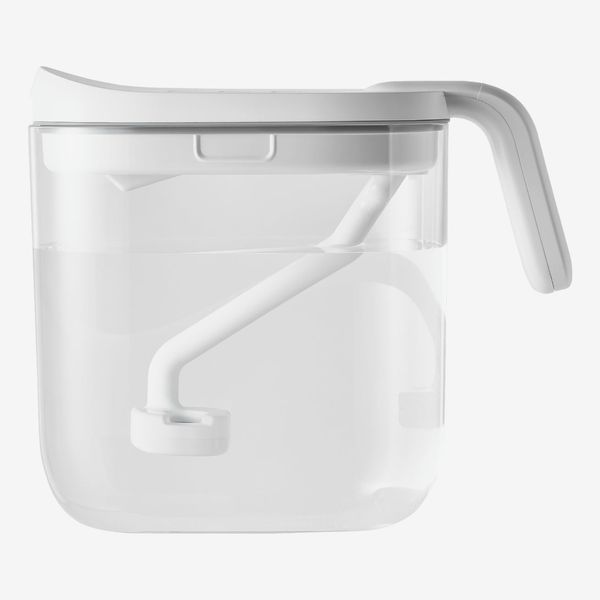
The company was founded by a doctor in South Korea who was looking for a better, cleaner humidifier for his young children and decided to create one himself. Carepods come in three sizes and are ultrasonic cool-mist humidifiers that don’t require filters. They also have a unique design that makes them incredibly easy to clean — and sterilize. There are only three pieces to take apart and wash: the basin, oscillator, and lid cover (plus a rubber gasket). The two larger models, Carepod One (shaped like a giant Rolo, according to Trolio) and Carepod Cube X50, have removable stainless-steel water reservoirs and lid covers, both of which you can throw in the dishwasher or sterilize with boiling water. The Carepod Mini is made of plastic and is just as easy to clean, though you can’t boil the parts in water or run them through the dishwasher. The plastic oscillator snaps in and out and can be hand-washed with soap and water or dipped (just the bottom half) in boiling water for a couple of seconds. The only part that is more difficult to access is the nook where the oscillator arm snaps in.
I got the largest model, the Cube X50, and was struck by how sleek it looks for a humidifier of its size — less like a medical device and more like something you’d find in a tastefully appointed home, with a streamlined and minimal design. The Cube and the original Carepod both remind me of my Cuckoo rice cooker , especially the inner stainless-steel basin that’s a dead ringer for the rice pot. (Perhaps Dr. Kim was nodding to his Korean heritage?)
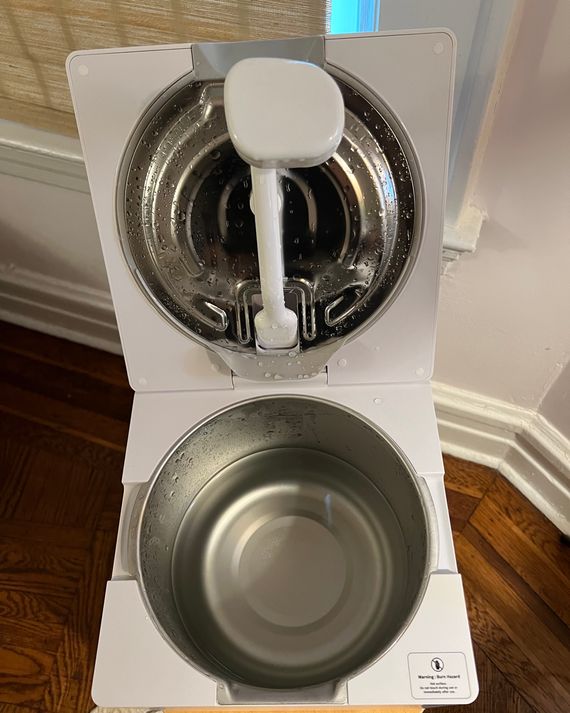
All I had to do to get the Cube going was snap in the oscillator, fill the basin with water, plug in the humidifier, and hit the power button. A robust and steady stream of mist emanated from the side lip, like a kettle, while the water inside gurgled like the proverbial babbling brook. (I find the sound to be extremely soothing, but could imagine it being too loud for some.) Removing the lid cover and rubber gasket for cleaning was a cinch, as was popping them back in.
As superior as it is to other humidifiers on the market, the Carepod is not perfect. For one thing, it’s not cheap. The mini-model, which has a capacity of 2.8 liters, costs $150, compared to other ultrasonic models in our guide to the best humidifiers that are available for under $100, like the Pure Enrichment MistAire and Levoit 4L . If you want the original stainless-steel model, that will set you back $275 for a four-liter tank. The largest Carepod, the Cube X50, goes for $350 for a 4.2-liter tank and comes with a heat-mist option. But if you factor in not having to spend money on replacement filters plus the time you’ll save on cleaning, perhaps it’s a wash.
Trolio finds removing the tank a little finicky, as the handles are quite narrow. The basin can be annoying to fill, too, depending on the size of your sink. But it’s by no means a dealbreaker. “I think it’s nitpicky to say it’s annoying to fill compared to other humidifiers,” says Trolio, “but I still wish it was easier to lift out the steel bucket inside.” I personally fill the tank in the bathtub, while Trolio uses a pitcher as a more convenient workaround.

Because of where the spout is oriented on the Carepod, Kitchens, Trolio, and I all had to play around with the best placement of the humidifier so that it doesn’t get the surrounding area damp. “It’s not something I experience with other humidifiers, where the mist mostly goes up first,” says Kitchens. “It’s a drawback but not enough to go back to those moldy plastic ones.” After some trial and error, I removed the optional feet from the Cube and placed it on a stool, and now I don’t have a problem with the rug or the side of my bed getting wet. (Turns out Carepod also sells modern-looking steel and wood stands for the Cube, but they each cost more than $100.) Despite these admittedly minor complaints, all three of us agree that it’s the best humidifier we’ve tried so far.
The Strategist is designed to surface the most useful, expert recommendations for things to buy across the vast e-commerce landscape. Some of our latest conquests include the best acne treatments , rolling luggage , pillows for side sleepers , natural anxiety remedies , and bath towels . We update links when possible, but note that deals can expire and all prices are subject to change.
- the strategist
- air quality
- kids and babies
- this thing’s incredible
Every product is independently selected by (obsessive) editors. Things you buy through our links may earn us a commission.
Deal of the Day
Micro sales, greatest hits, most viewed stories.
- 26 Things on Sale You’ll Want to Buy: From Everlane to Universal Standard
- Ask Chris Black: Can You Recommend Some Swim Trunks?
- It Took Me Three Years to Find A Moisturizer That Fixed My Dark Circles
- The Strategist Haul: What the Editors Bought in March
- What Jena Malone Can’t Live Without
- What 58 Famous People Smell Like
- 13 Professional Organizers on the One Item They Tell Every Client to Buy
Shop with Google


IMAGES
VIDEO
COMMENTS
Step #1 - Build a Travel Writing Portfolio. The first step in getting started as a professional travel writer is to build a writing portfolio. Your writing portfolio should be easily accessible online and will act as a record of all of your travel writing work.
Record your interviews or take notes to ensure you don't forget anything and have quotes to use for when you write your story. And, of course, ask permission before you conduct the interview or use the material. With your notes and quotes in order, you then need to do the hard part: figure out what's relevant.
Becoming a travel writer requires a passion for travel, strong writing skills, and the ability to conduct thorough research. Here are the steps to becoming a travel writer: Develop strong writing skills: Strong writing skills are essential for becoming a travel writer. Take writing courses or workshops, read widely, and practice writing regularly.
Developing Your Writing Style. In the realm of travel writing, a writer's style becomes their distinct fingerprint, an expression of their literary personality. This style is the lens through which readers perceive the world you describe. It's crucial to cultivate a voice that resonates authentically with your experiences and perceptions.
Talk to other writers, attend workshops or conferences and research travel markets. The better you understand the business, the more success you will have. Read more on the business of travel writing. Social media is a huge part of work as a travel writer. Follow other travel bloggers, journalists and influencers.
Now more than ever, it is much easier to get your name and work out there in order to be considered for a travel writing position. Gather all the tools you need, make a game plan with these steps in mind, and plan to turn many of your experiences into stories. 2. Write constantly. This one's a no-brainer.
Probe your reverse culture-shock. Plumb your own depths. 2. Write. Put on some music of the place, surround yourself with images, taste a bit of the flavors you found there. Pour it all out in torrents of words. More, more, more, keep writing. Don't hold anything back; be unwaveringly honest.
To become a travel writer, you need to be able to tell compelling stories that showcase the good, the bad, and the ugly about a destination. Then, you need to be able to sell your stories to media outlets or brands. Source: Unsplash. Travel writing is a competitive field, but if you can manage to break in, the payoff is well worth it.
Becoming a travel writer is no different. Name and brand yourself as a travel writer and work to establish your credibility in the field. Especially if you're active on online systems such as LinkedIn or Contently, adding the world "travel writer" to your bio, resume, or credentials can help editors search for travel writers find you.
Stay passionate: One of the most important tips we can give you for becoming a successful travel writer is to stay passionate about what you do. Stay passionate about exploring, writing, learning, and sharing with the world. Keep learning: Journalism, in general, is a constantly evolving field, and there's always something new to discover.
Steps to become a travel writer include: 1. Complete a relevant degree/course. Although it isn't an official requirement, completing a relevant course or degree that relates to travel writing may help to strengthen your written communication and journalism skills. Essay-based courses may help individuals who are considering a career as a travel ...
How to Become a Travel Writer (Seriously) 1. Read. Start reading and don't stop. Read all the "greats," but don't skip the more obscure writers. Read magazines. Get yourself a library card if you don't have one, and if you can't do that, check Google Books and Google Magazines. The idea isn't to imitate, but to simply know what ...
To make travel writing your full time job, you will need to build up contacts and credentials in the industry. This can take several years of working from contract to contract until you make a name for yourself. Many travel writers work other, more sustainable jobs while they travel write on the side. 3.
Second of all, you should never compare your writing to anybody else's, they have their genius and you have yours. Accordingly, don't mimic anybody else's style. Number 3, recording is critical as a travel writer. Don't rely on memory to capture all the sensory details and facts that will bring the piece together.
A travel writer is a writer who specializes in documenting their travel experiences, providing insights into the places they visit, and sharing recommendations for other travelers. ... They may work in a newsroom or at home, researching and writing stories that meet the requirements of their employer's editorial style. Some travel writers are ...
Avg. Pay / hour. $33.49. Education. 0-6 Months. Job Outlook. 3%. Travel Writers are professionals who are experienced in writing a variety of human interest stories focusing on travel. Travel Writers will use their personal experience after visiting a tourist destination and write a critique of the destination as well as any recommended sites ...
Screenshot of Sarah Brown's online portfolio using a Journo template. This is a great example of a freelance travel writer's portfolio. 3. Network with travel editors and understand their work. In every freelancing career, networking is equal to your wealth. Even with travel writing, you need to connect with travel editors to learn how they ...
Here are the steps you can take to pursue a career in travel journalism: 1. Earn a degree. While some employers may hire travel journalists without a degree, earning this academic credential can often help you find full-time jobs with media outlets. Earn a bachelor's degree in journalism, communications or a related area, such as tourism and ...
Description. This course will take you from beginner writer to a career as a travel writer or digital nomad. There are many assignments and quizzes to help you to solidify your knowledge. I have been a travel writer for over 30 years now and I have interviewed other travel writers for this class. Learn from the pros and change your life to a ...
There are several educational requirements to become a travel writer. Travel writers usually study journalism, english, or communication. 76% of travel writers hold a bachelor's degree, and 15% hold an master's degree. We analyzed 368 real travel writer resumes to see exactly what travel writer education sections show.
33. Odyssa Magazine. Freelance submissions are accepted each quarterly issue, though editors are particularly looking for travel pieces in the form of a guide, personal travel experience or reflection of how travel affects our thoughts and who we are. Pay is $30 per article up to 1,500 words.
15.Loaded Landscapes. If your passions include travel, photography, and writing, you'll want to submit a pitch to Loaded Landscapes. It accepts travel articles and written content related to landscape, nature, and travel photography. Payment terms are negotiated with the editor but are in the $20 to $150 range.
In this course you will learn how to develop the skills of a travel writer. You will learn how to translate what is seen, heard, tasted, touched, smelled and felt (intuitively and physically) into publishable articles and books. You will understand the writing styles and methods needed to sell material in today's competitive market.
Underscored's travel writer Kyle Olsen reveals the tenents of airline etiquette from arrival times to personal space to security protocols for a smooth journey.
This chapter examines how travel writing has been influential in the past re-thinking of the ethnography and history disciplines. Through a more open and creative approach recognising the style of practitioners such as Michael Jackson and Stephen Muecke within ethnography, and post post-modern theory, the 'from below' perspective and the acknowledgement of narrative and multiple voices in ...
Sinaliy Travel Backpack. Amazon. Buy on Amazon $40. As a solo traveler, I don't love hauling in a big suitcase every night to a hotel while on a road trip, for safety reasons and convenience ...
eligibility requirements continue to be met, the MassHealth agency notifies the applicant that he or she is eligible. The member is eligible for payment of all covered medical expenses incurred during that deductible period, other than those submitted to meet the deductible, as long as the
What is a digital nomad visa? A digital nomad visa is a permit that allows a person to work remotely in a foreign country. The nomad's source of income usually has to be located outside the ...
An American journalist in Paris shares 13 French fashion-inspired items for spring that will give your travel outfits an instant boost. From pleated skirts and comfortable sneakers to tote bags ...
Carepod Cube X50 Humidifier. $350. Buy at Carepod. The company was founded by a doctor in South Korea who was looking for a better, cleaner humidifier for his young children and decided to create ...